TRAVELING THROUGH THE ITALIAN TM MOTORCYCLES’ 45-YEAR HISTORY
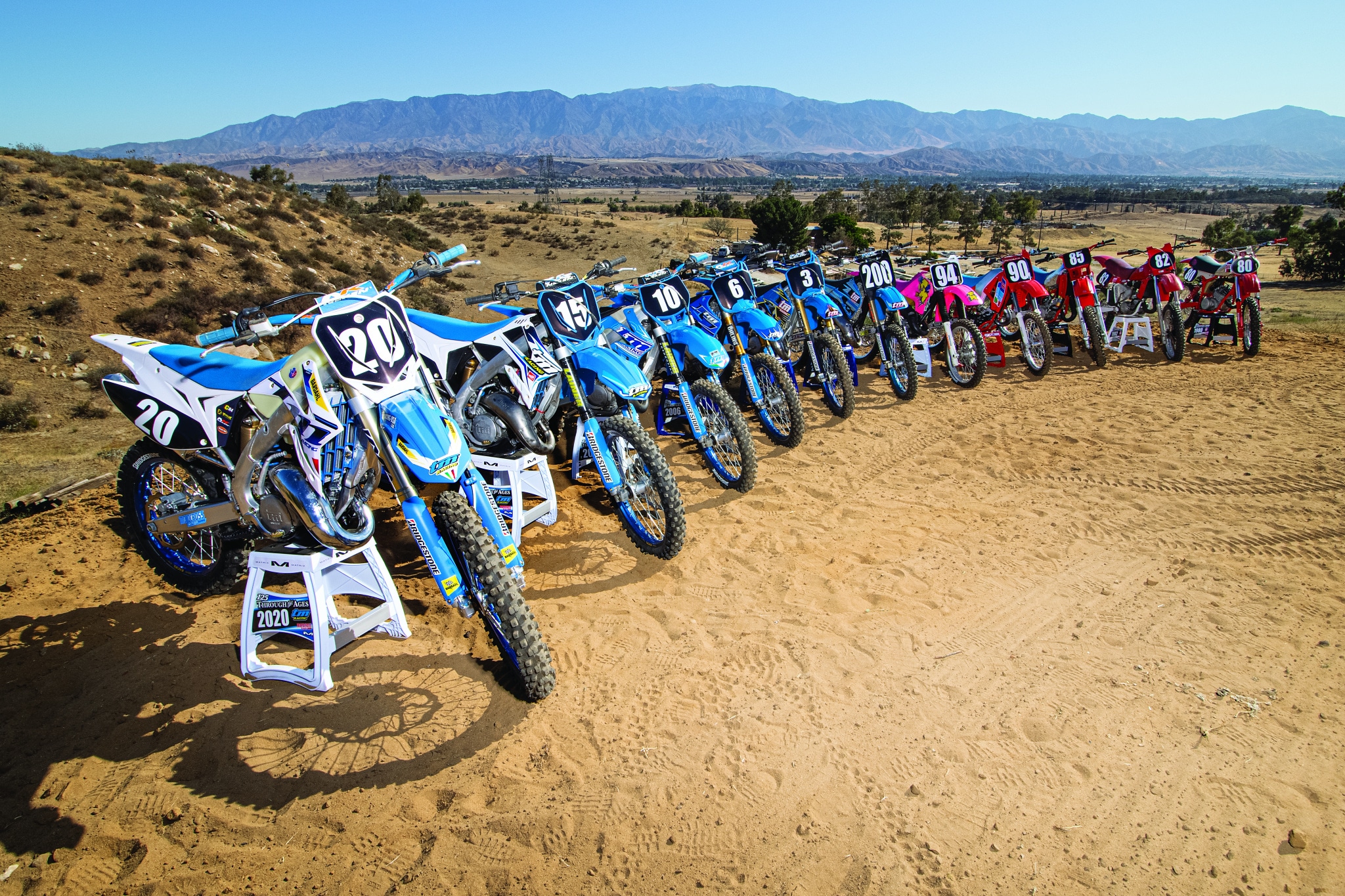 Ralf Schmidt is both the Dutch and American TM importer. These are his bikes.
Ralf Schmidt is both the Dutch and American TM importer. These are his bikes.
BY RALF SCHMIDT
I am a motocross superfan to say the least. I love everything about the sport—from watching top Pros fight for wins to racing myself at the local battlegrounds on the weekends. Out of my love for the sport, I found a deep connection with the Italian TM brand. Since I am originally from the Netherlands, I jumped at the opportunity to become Holland’s TM importer. I soon became infatuated with the 45 years of TM history and started collecting old TMs through the ages. It became an addiction, as well as a money pit, but I wanted to have a part of TM history, even if the collection was rotting away in a storage container.
The problem was, it took me many years of buying and selling old TMs to figure out what I really wanted. At times I would just buy to buy, and other times I would just sell the things I would wish I had kept years later—and have to buy them back again. That’s probably the story of every collector in the motocross world: “If I wouldn’t have sold that bike back then, it would have been worth this much now.”
The truth is, I never wanted to sell anything I bought, but when I found another part of TM history in the far corners of the earth, I would need to sell something to pay for it. This is the true story of my personal TM 125MX collection—at least part of it. Not all the bikes are fully restored, as some parts are extremely rare or even extinct, so I had to make due with a few aftermarket parts or use different-year TM parts on bikes here and there.
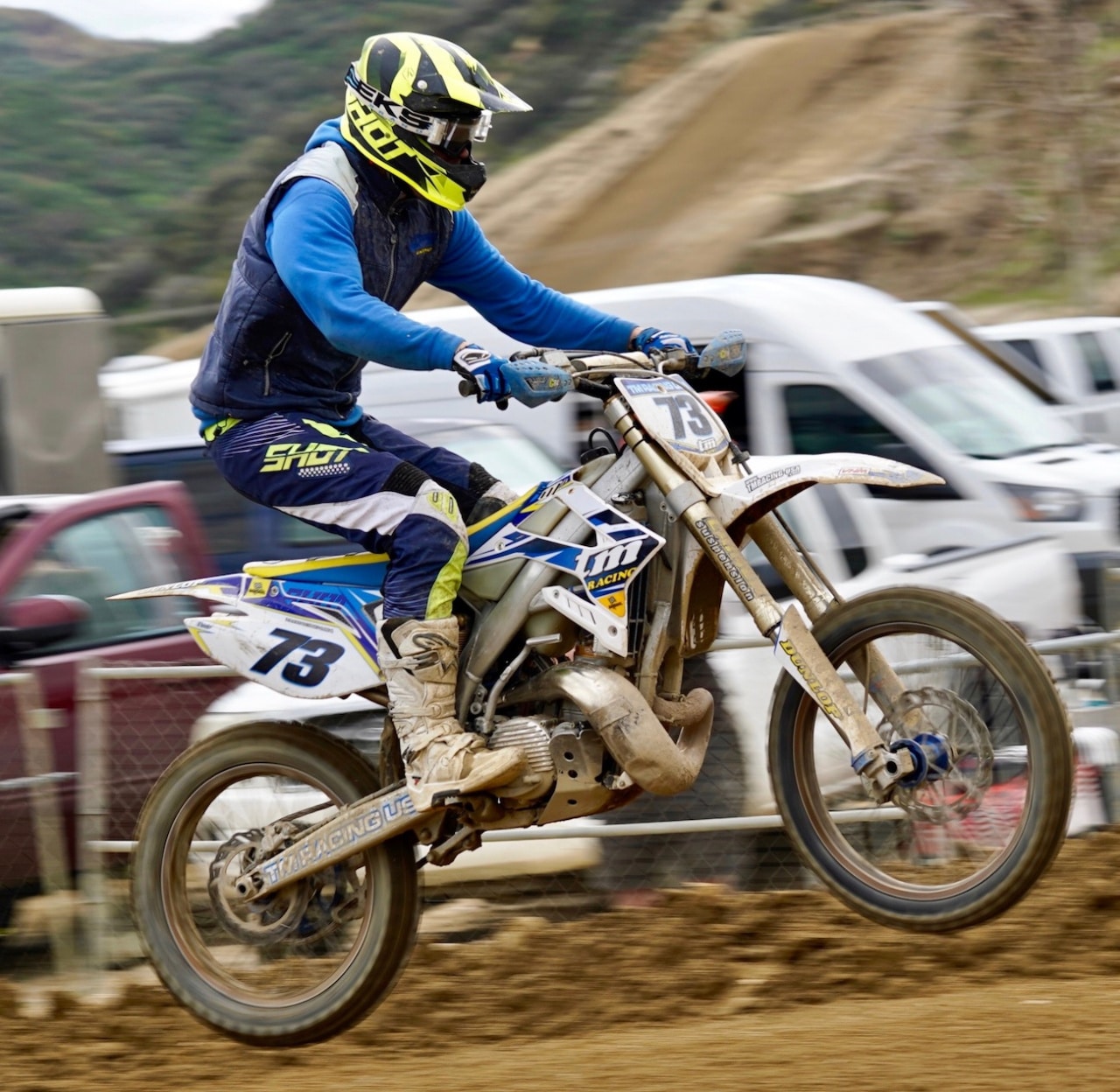 Ralf Schmidt races every week in everything from Motocross to cross-country to endurance race.
Ralf Schmidt races every week in everything from Motocross to cross-country to endurance race.
Having spent all these years with TM, I have learned a lot about the way they built bikes—both 45 years ago and the way things have changed since then. Back in the ’80s and ’90s, when TM released a new model or update, it didn’t necessarily mean it got the same changes all over the world. The changes were given first and foremost to TM’s home country of Italy, as well as to their race team. The other TM dealers around the globe wouldn’t see the production changes until two or three years later.
I don’t blame this solely on TM. TMs are expensive machines in comparison to the Japanese manufacturers. It was the idea of the U.S. importer—before I moved to America and took over—to put older parts on the new models. Why? To get a better price break to keep TMs cost-competitive against the Japanese models. It was a win-win situation for both the U.S. importer and for TM Italy. One would get the bikes at a lower price and the other would unload surplus parts. That was a viable business plan until the internet came. You can’t get away with that anymore. Times have changed, and customers want the latest and greatest changes.
So, be forewarned: some of my TM bikes were enduro models at one point. Some are missing parts and some have different parts on them. Would I love to have nothing but complete all-original bikes? Of course! Although, these bikes don’t stop me from telling the story of TM through the ages.
TM IN 1977-1980
Moto-TM was the original name in 1977. The two partners, Claudio Flenghi (Mr. Engine) and Francesco Battistelli (Mr. Frame), came up with the TM name by using the first letter of each of their son’s first names, which are Thomas and Mirko. The first TMs were air-cooled units with twin shocks. For the first few years the boutique brand only raced in Italy, with a few countries slowly building interest in the Italian brand. Back then, Italy had a ton of small manufacturers that produced dirt bikes, such as Ducati, Villa, Benelli, Aprilla, Garelli and Parilla, with almost all of them dying off—at least their motocross divisions. In 1982, Mr. Engine and Mr. Frame sold the company to one of its first GP racers and bike developers, Gastone Serafini, who still owns TM to this day.
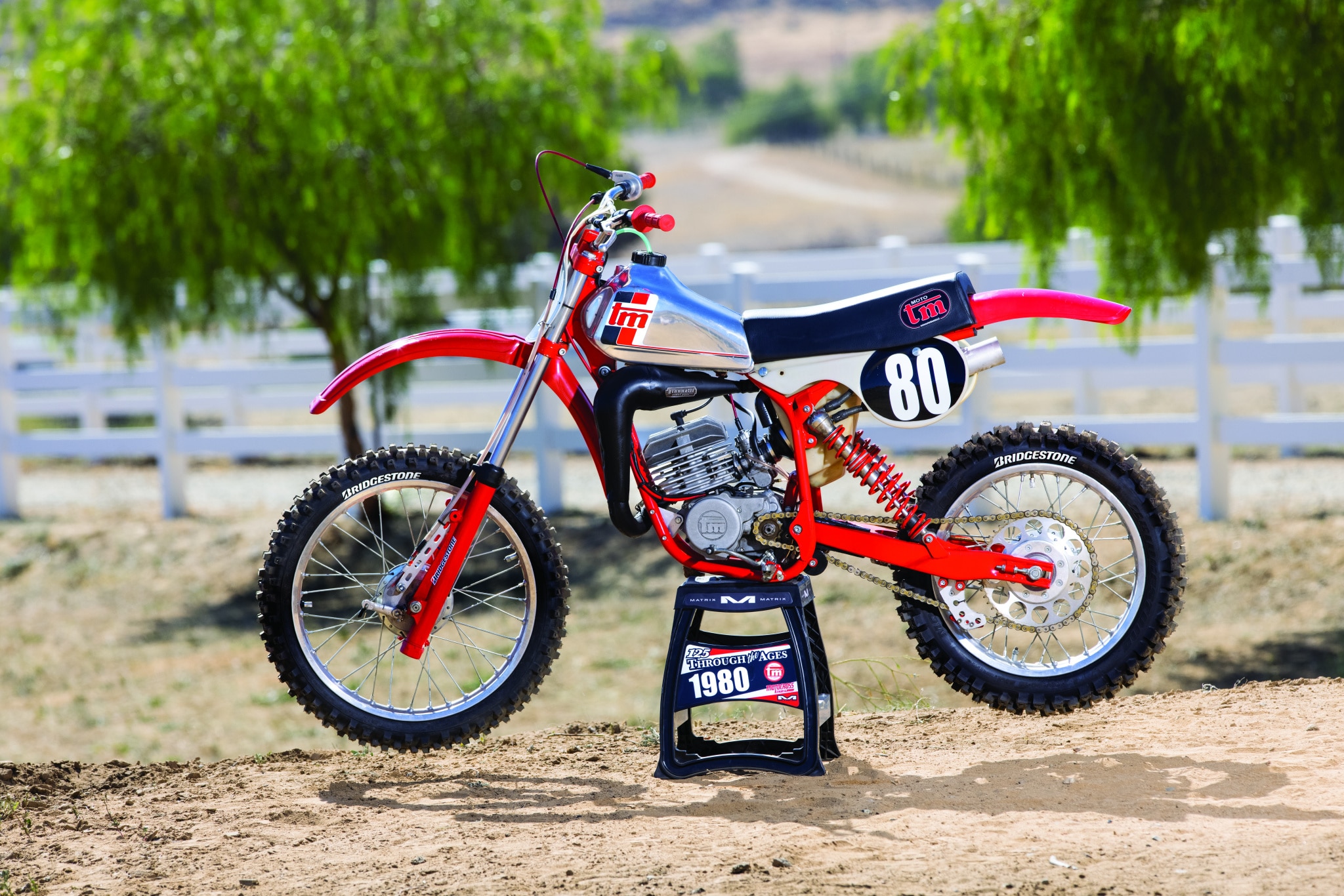 1980 TM 125.
1980 TM 125.
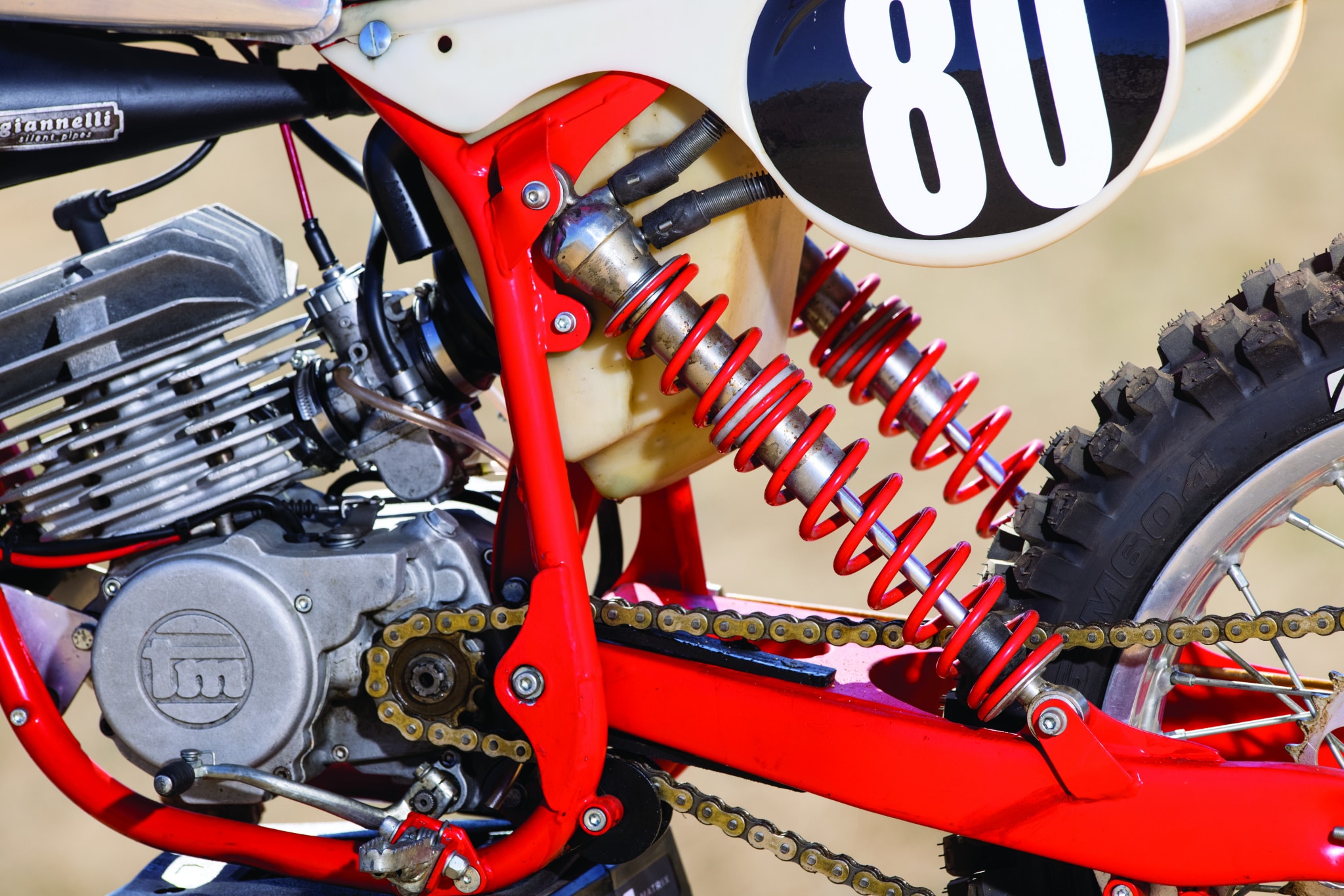
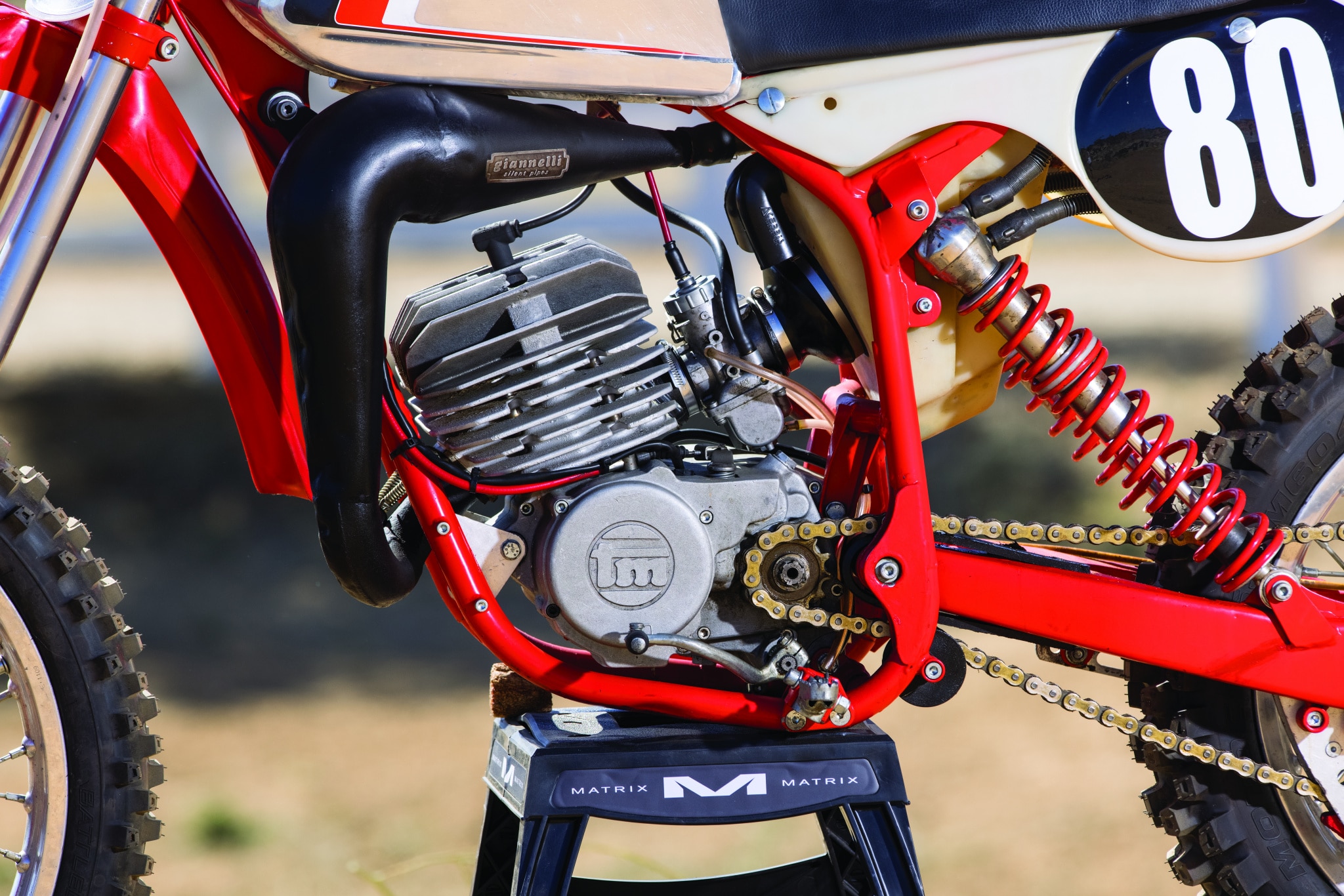
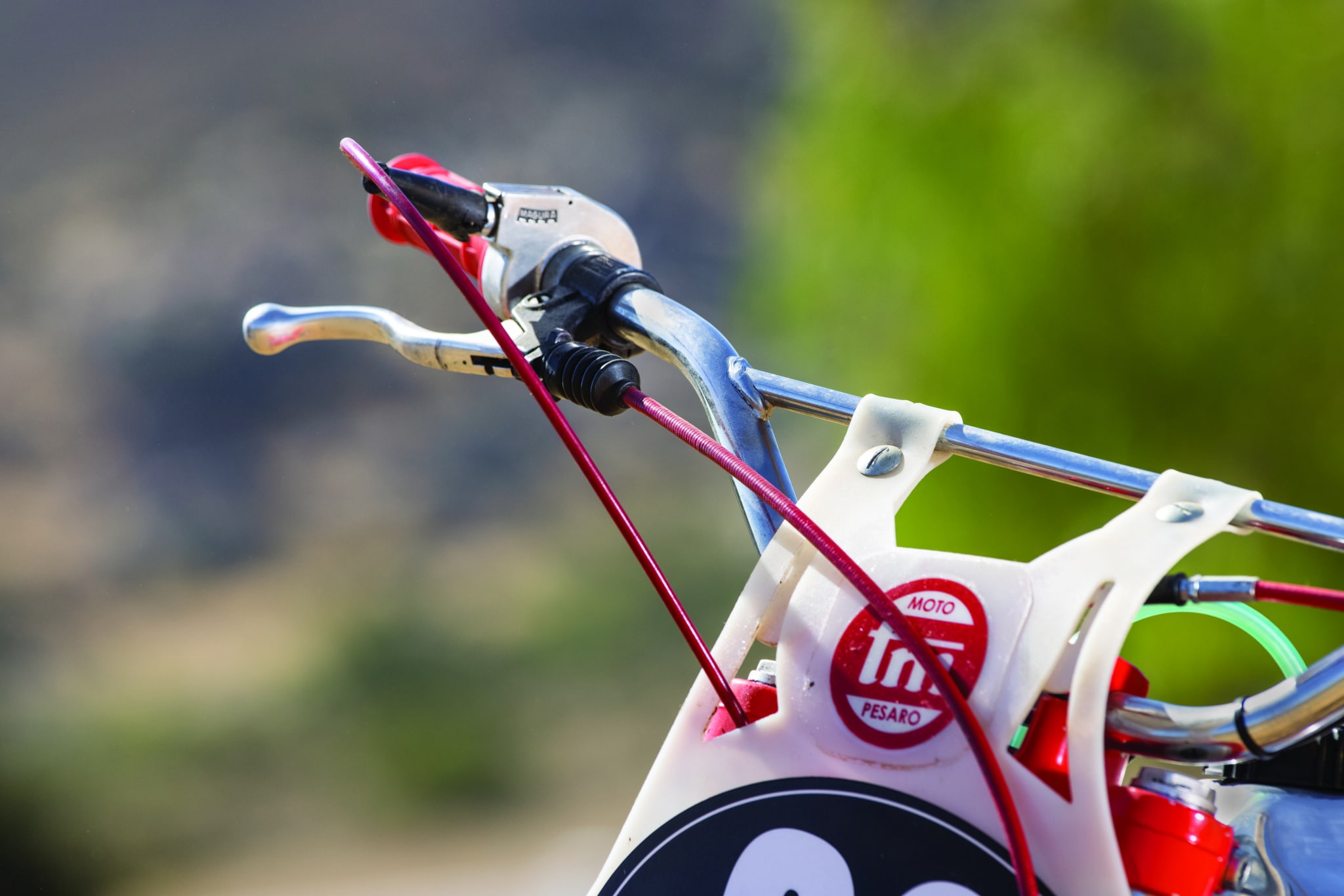
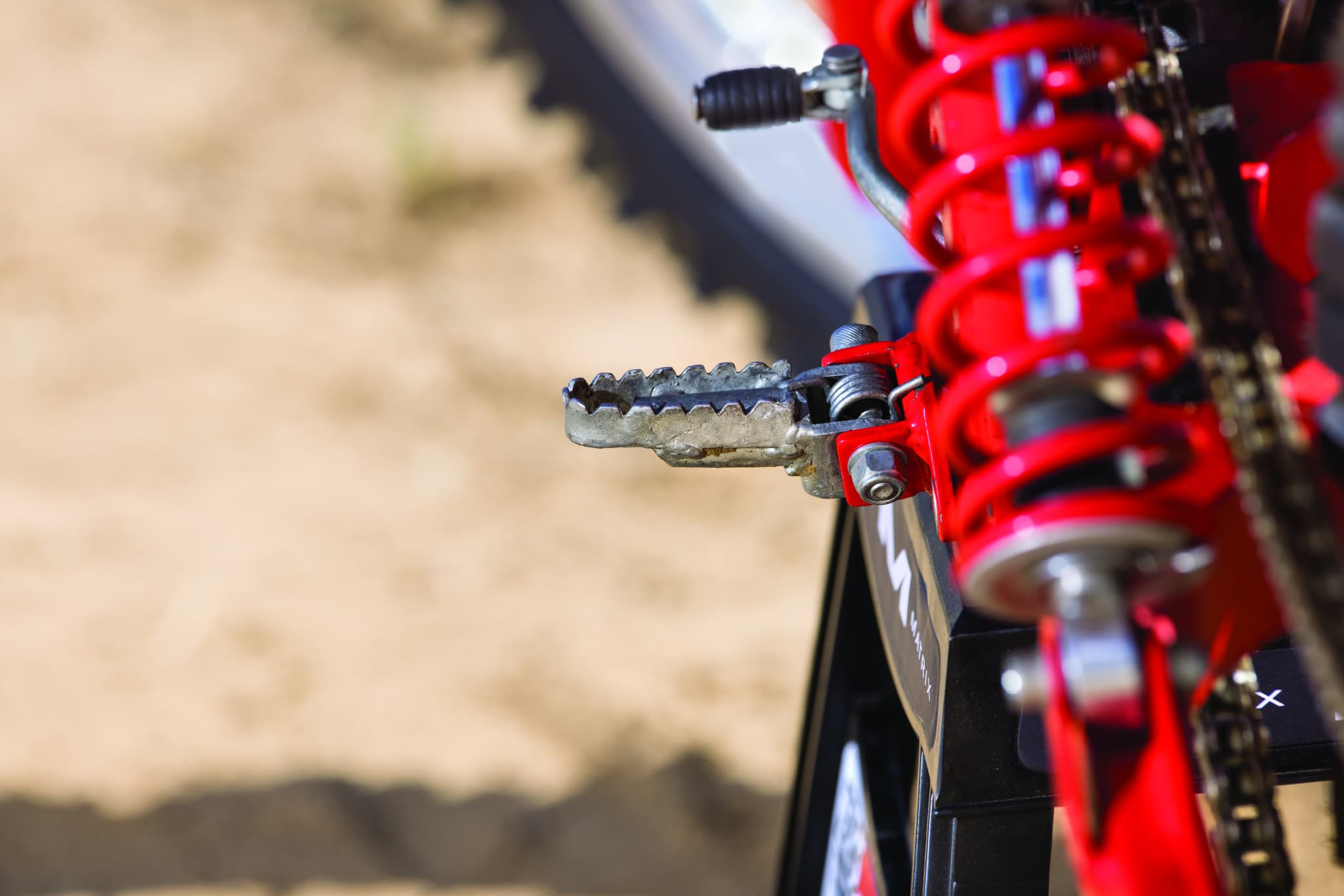
TM IN 1982
This 1982 TM 125MX is the rarest TM I own. It is one out of five bikes that were built by TM for the World Championship. I found it in Belgium at a small dealership. The TM engineers copied the Suzuki Full-Floater suspension system on these factory bikes with this model having a full water-cooled system as well. The actual production model had an air-cooled cylinder with a water-cooled head, and it still had the twin rear-shock setup. The current TM owner, Gastone Serfani, was one of the factory riders who was racing this “prototype” in the GP series. Back in the 1980s, a factory rider in Europe went to the races in a box van with one mechanic. Now it is all semis and a workforce of technicians.
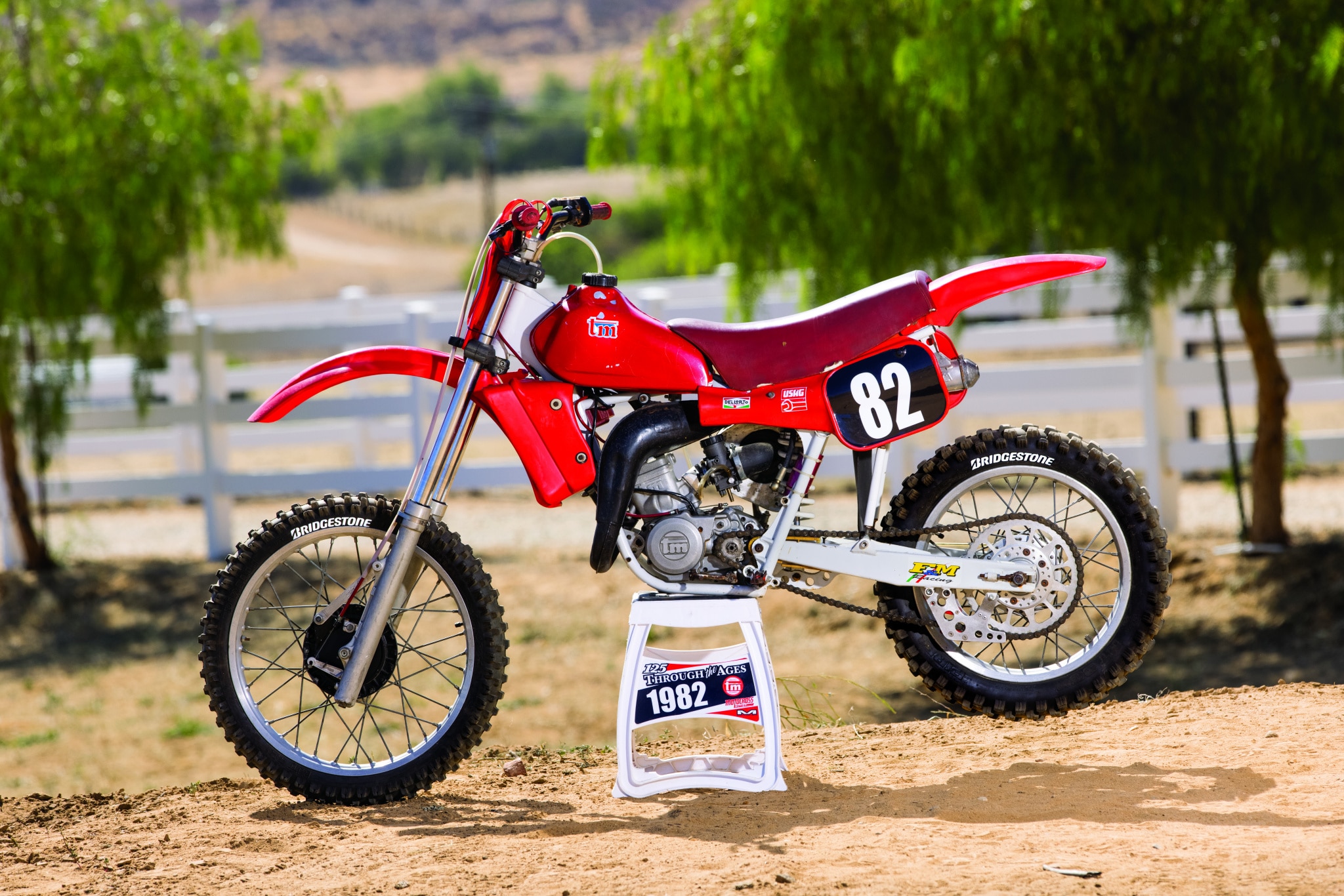 1982 factory TM 125.
1982 factory TM 125.
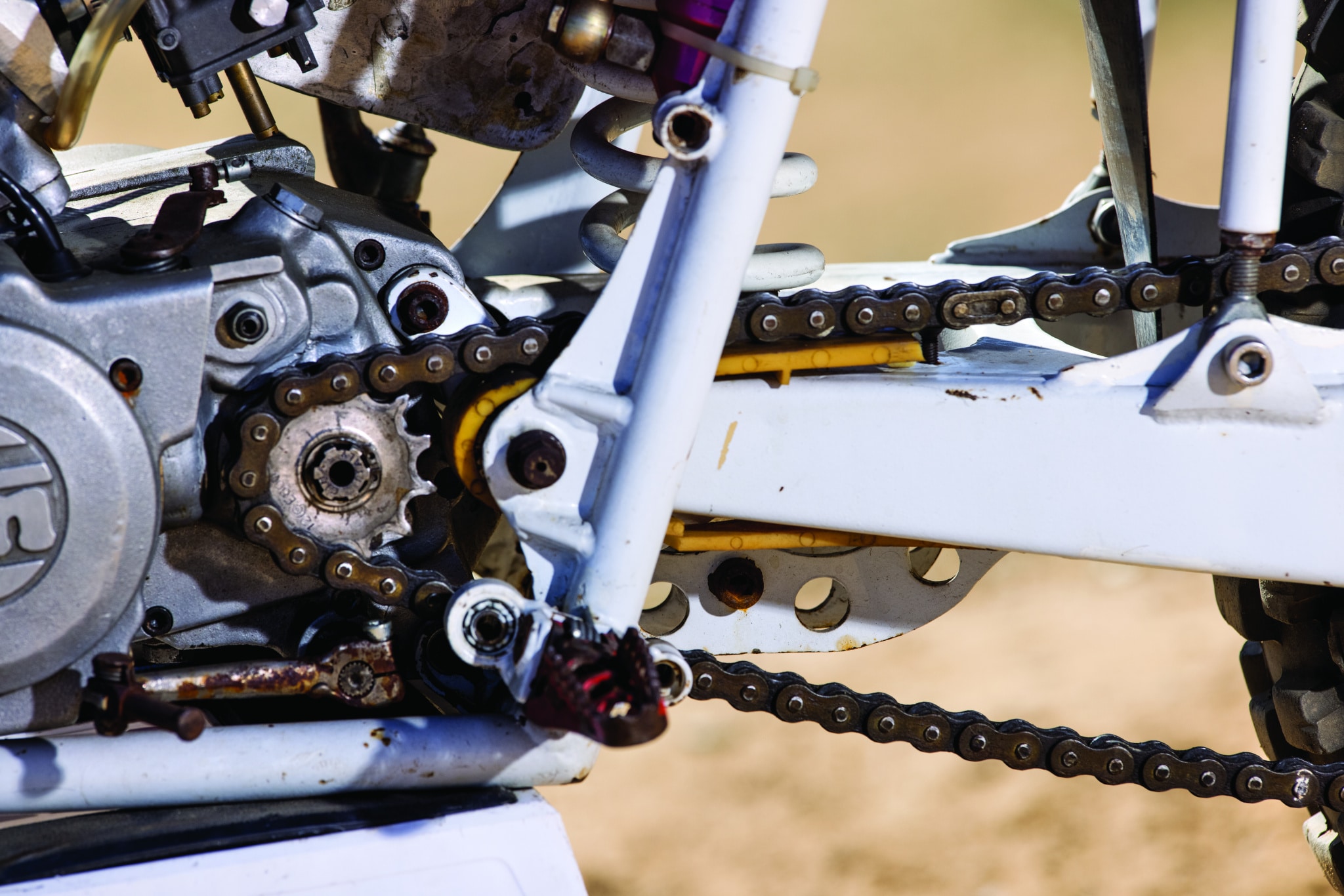
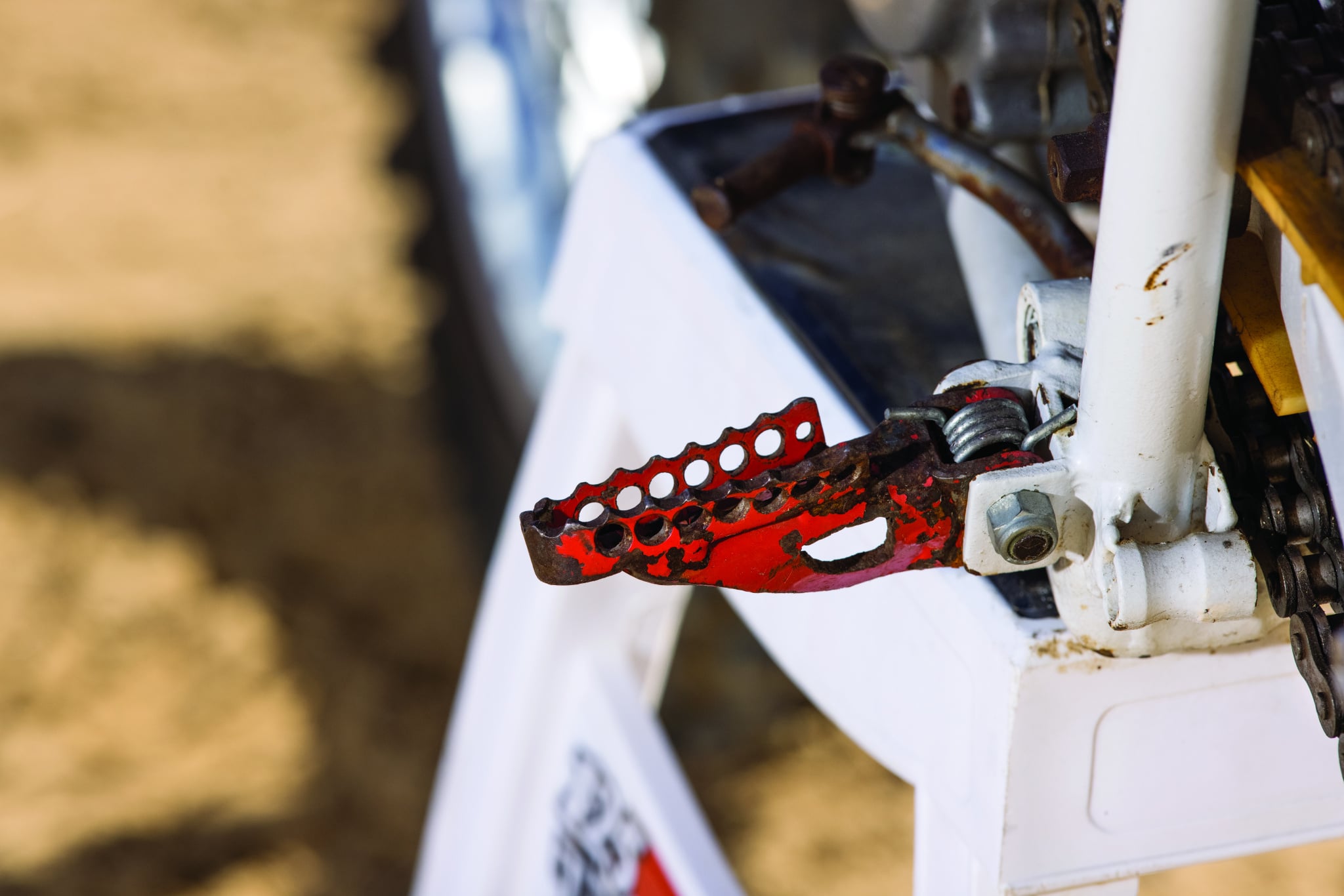
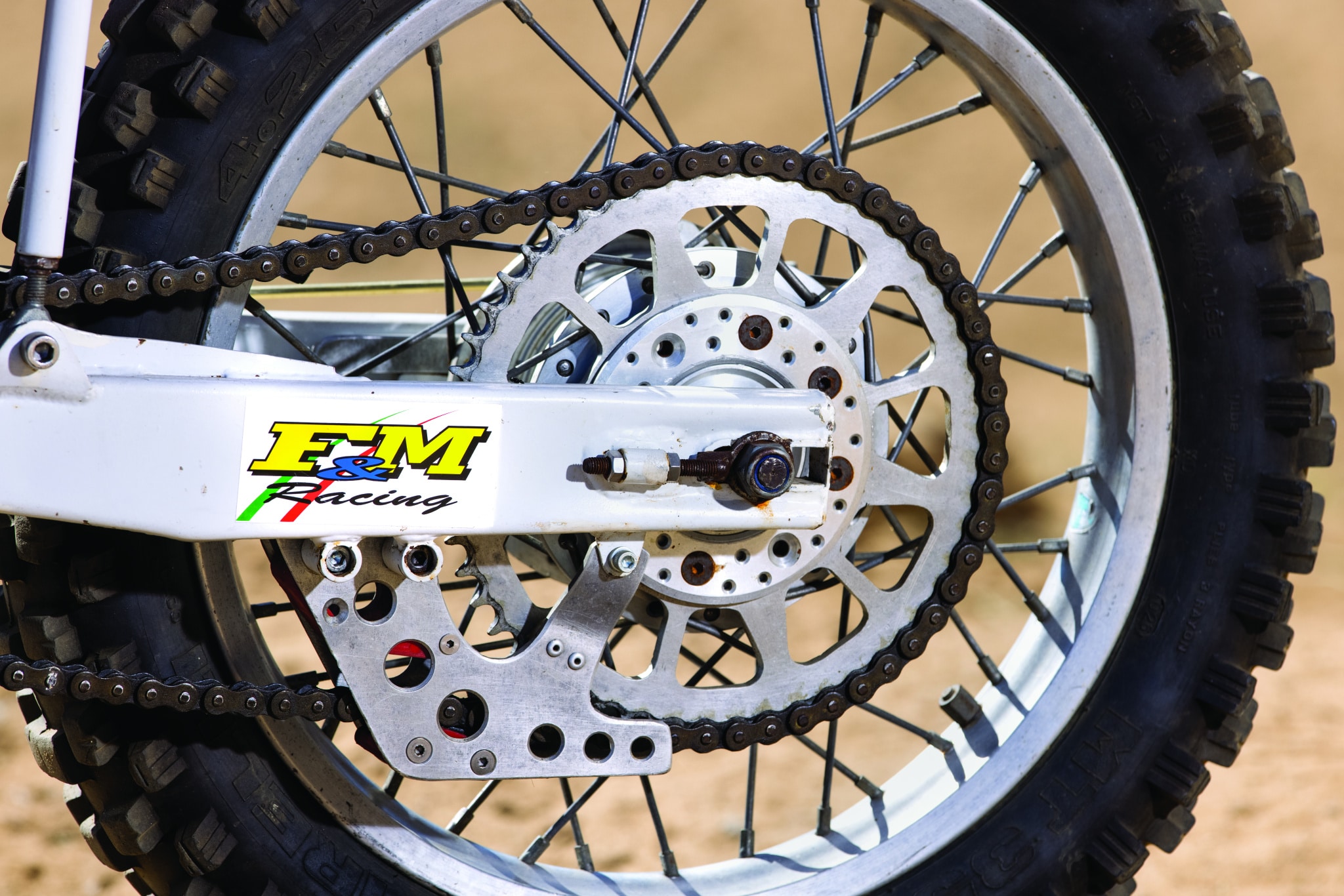
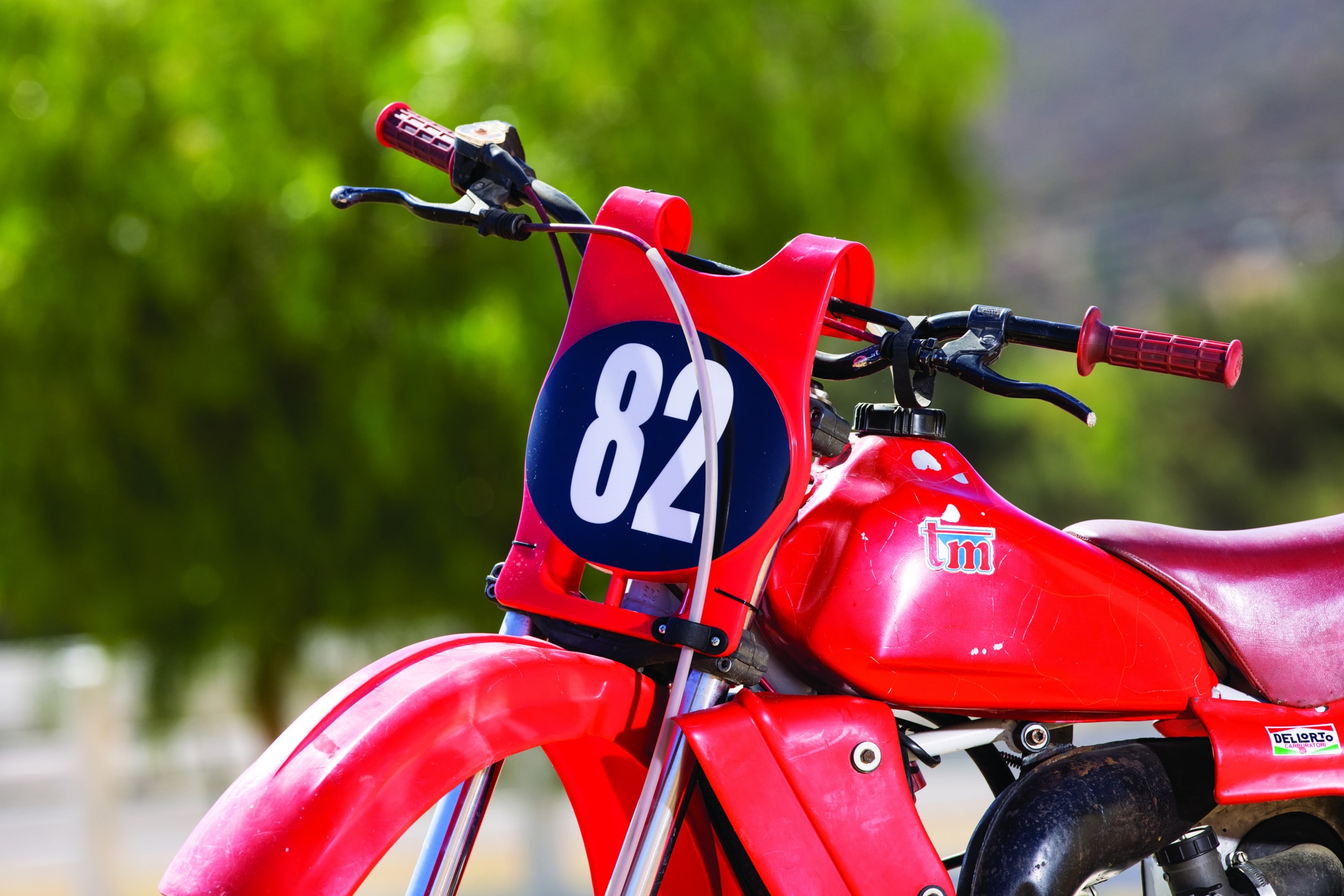
TM IN 1985
TM kept building and trying things. In 1985, the shock got leaned at the same angle that Yamaha had been using for a while. TM’s marketing department called it the “Sticking System.” Front disc brakes were introduced as well in 1985, and rear disc brakes were used by 1986 (most Japanese bikes did the same thing that year). This is also the year that TM introduced a side airbox cover like the one Suzuki had been using (this airbox design got picked up by KTM in 2000 and is still going strong). The similarities were quite stunning between multiple manufacturers. It was as though they were “stealing” from each other. This generation of TMs was on par with the Japanese competition, with TM winning the World Enduro Championship in 1985 with Renato Pegurri and again in 1987 with D. Trolli, as well as the Italian 125 Junior MX Championship with Walter Bartolini.
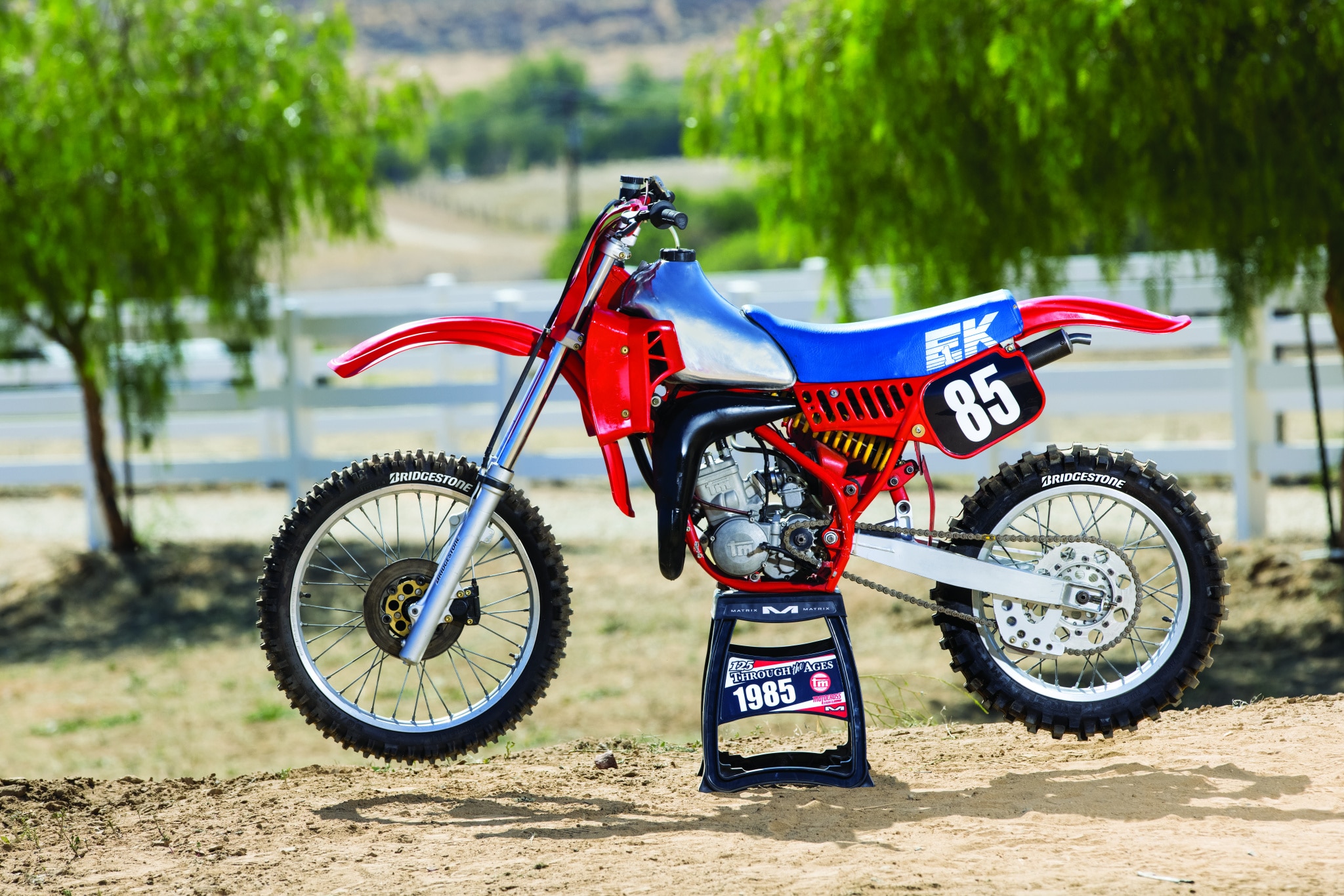 1985 TM 125.
1985 TM 125.
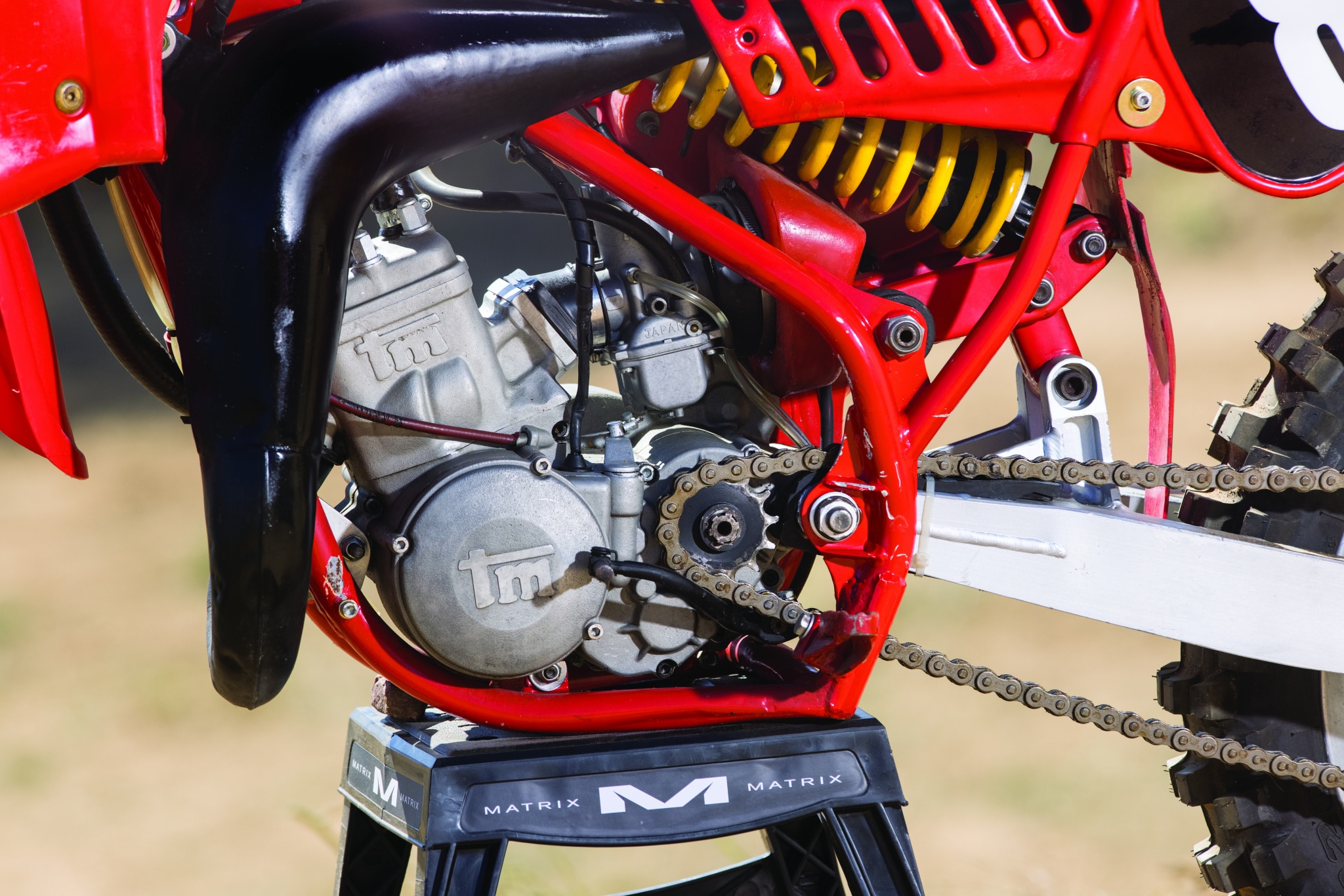
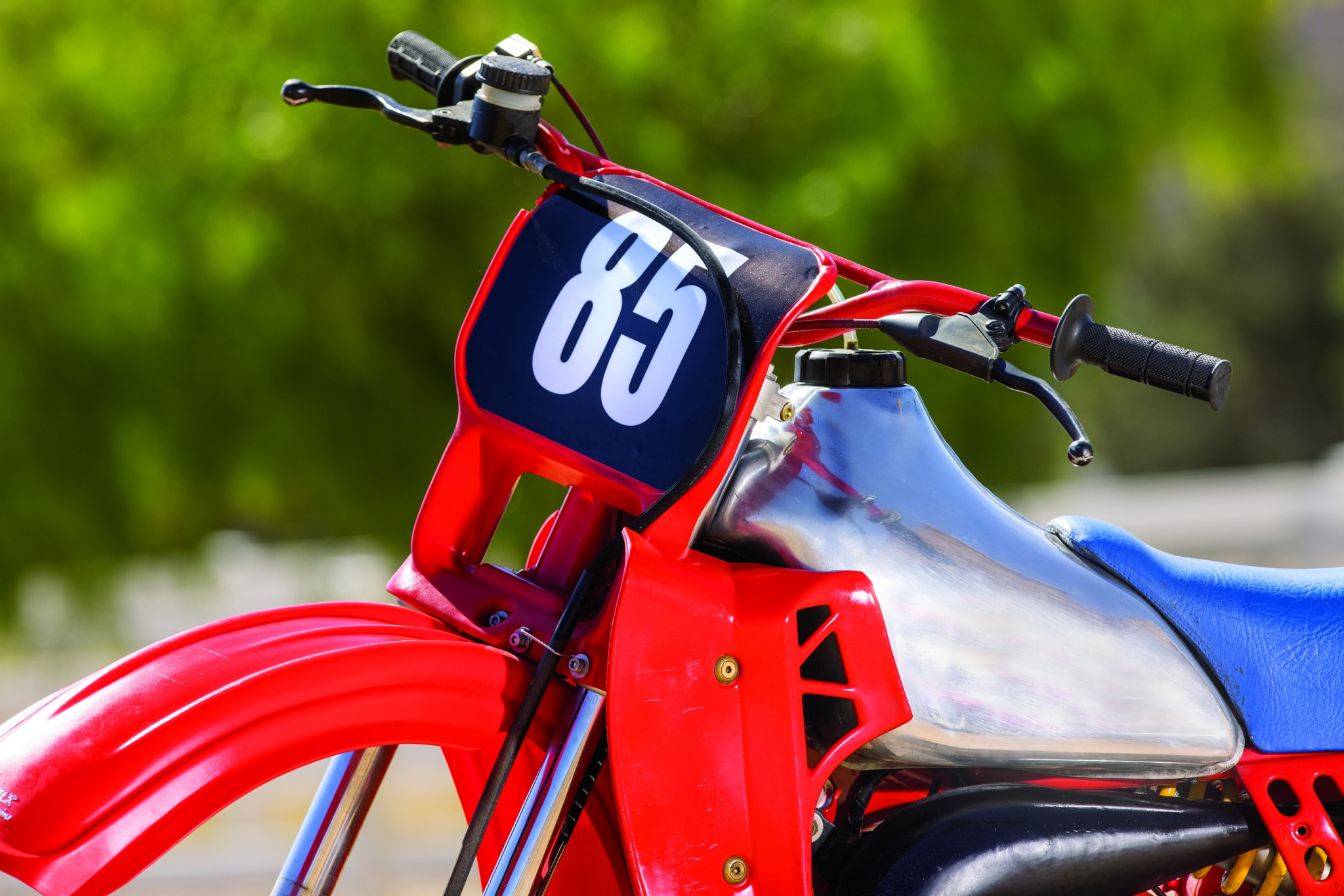
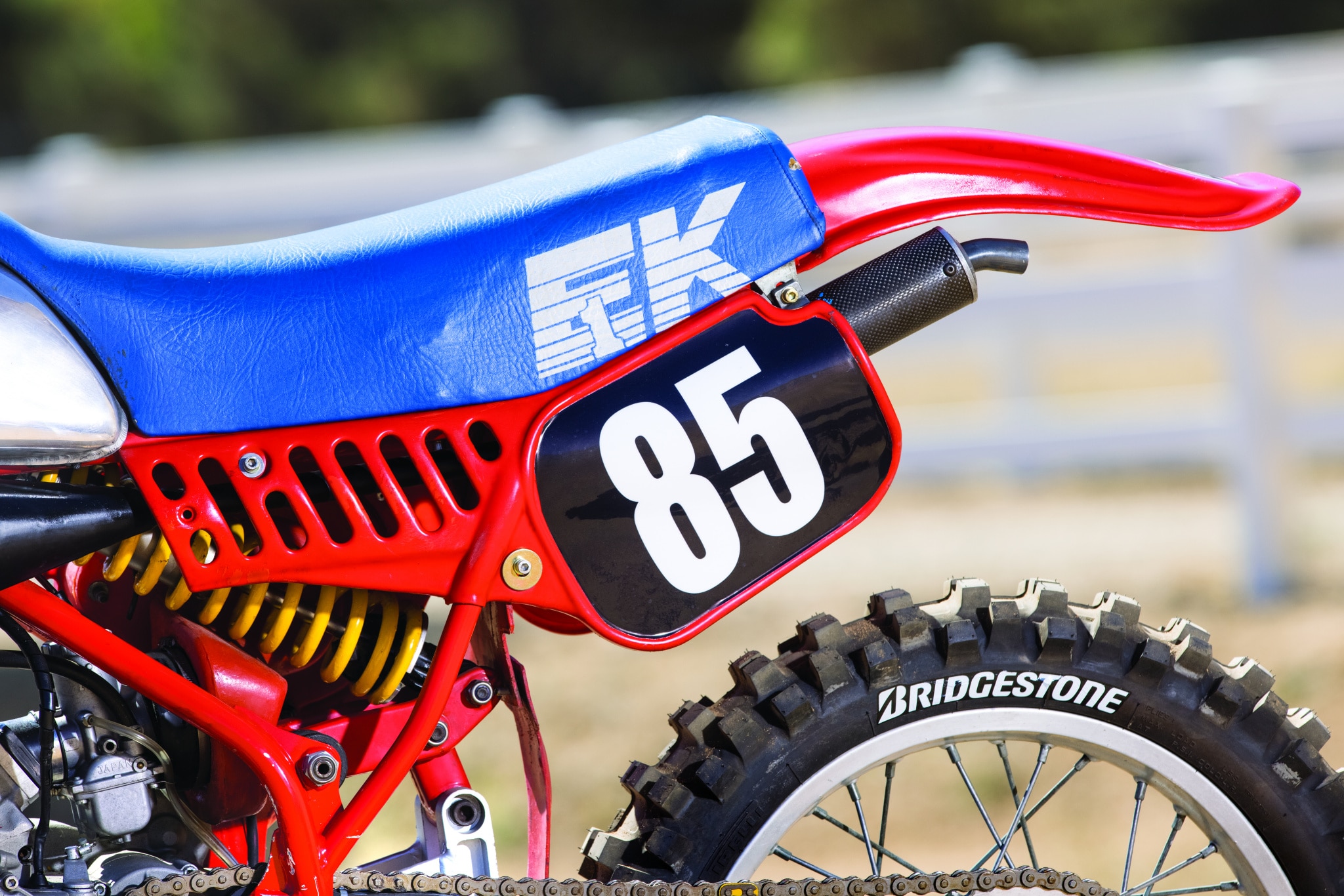

TM IN 1990
During the late 1980s through the early 1990s, all brands and bikes started to look alike. They all had lots of suspension travel and disc brakes front and rear. The 1990 TM looked a lot like the 1990 Honda CR125 and Suzuki RM125, as TM borrowed a lot of its existing plastic, although TM still kept its unique flavor with an oversized aluminum tank and special air channels that led into the airbox (this feature was picked up again in 2015). In the late ’80s and early 1990s, 80cc engines in 125cc frames were the big deal in European motocross and enduros all over Europe. TM dominated these classes, as they made a production bike using a big-bike chassis with an 85cc engine installed. For many years its bikes were the lightest and the engines were bulletproof. TM won just about every race that had a class for 80cc engines, including the International Six-Day Enduro, taking second in the World Championship and sweeping the podium at the Italian Championship. Due to these results, the 85cc sales in Europe for these bikes skyrocketed. In Europe, 16-year-old kids were buying (or their parents were buying) full-blown race enduro (road-legal) 85cc bikes to ride to school.
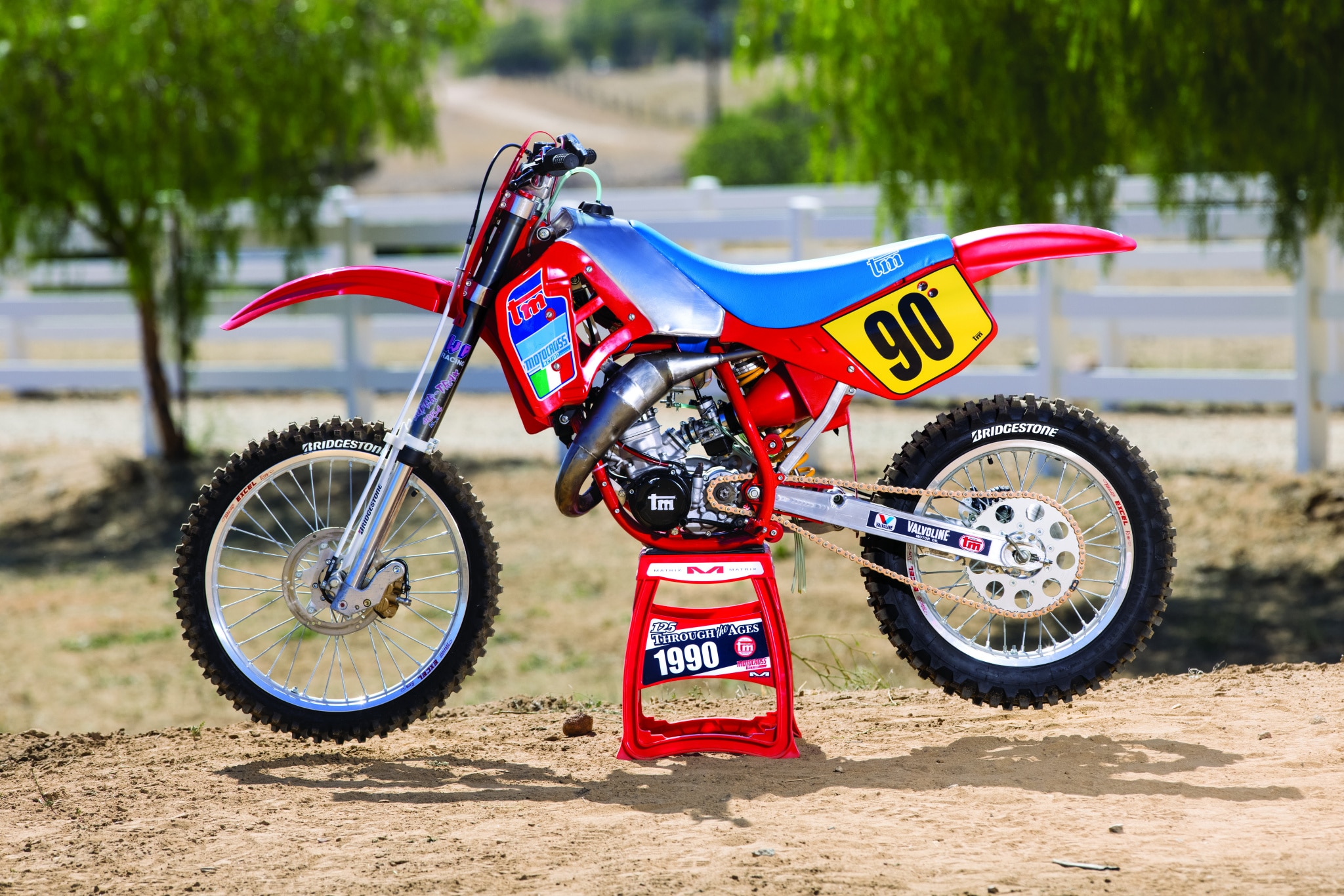 1990 TM 125.
1990 TM 125.
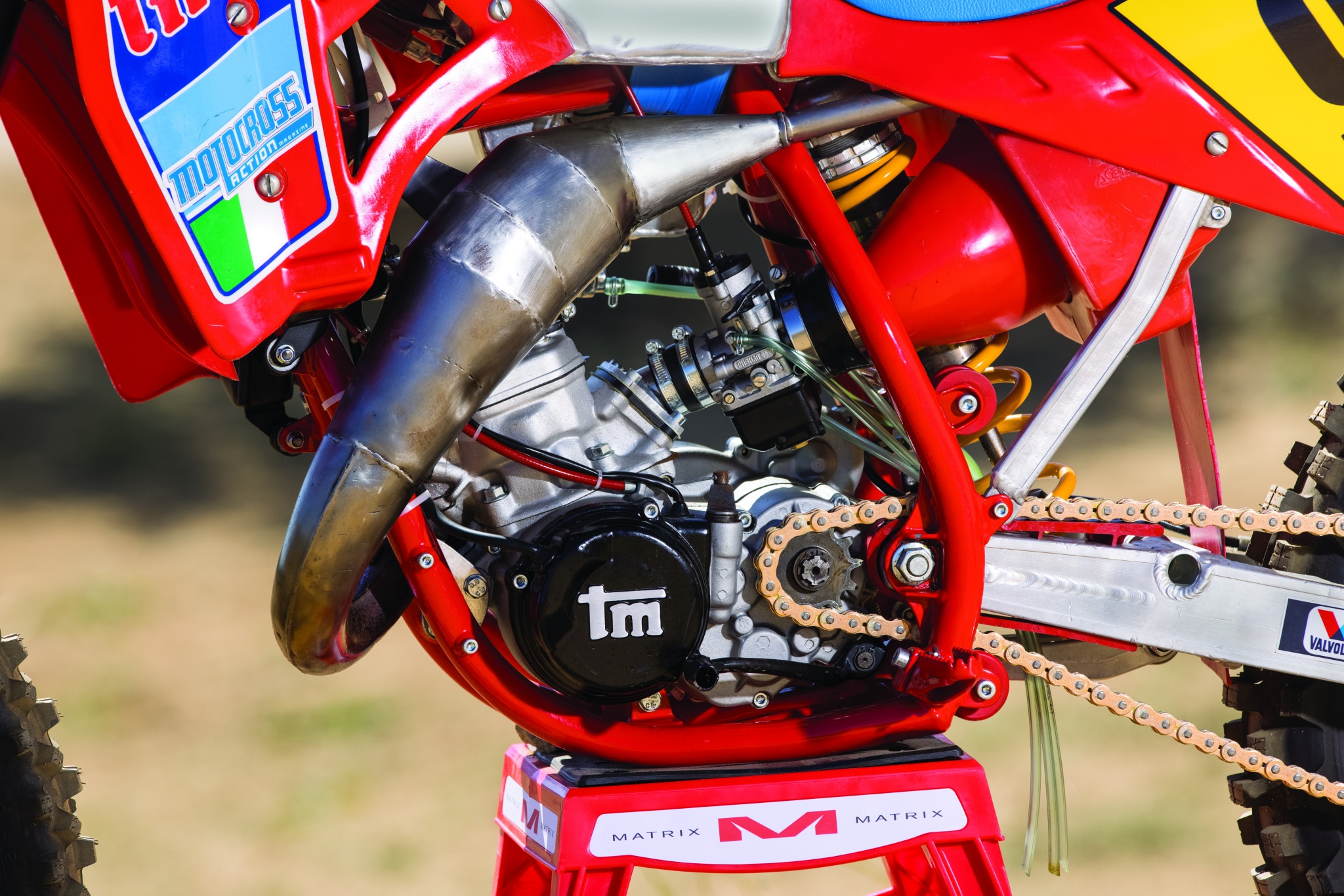
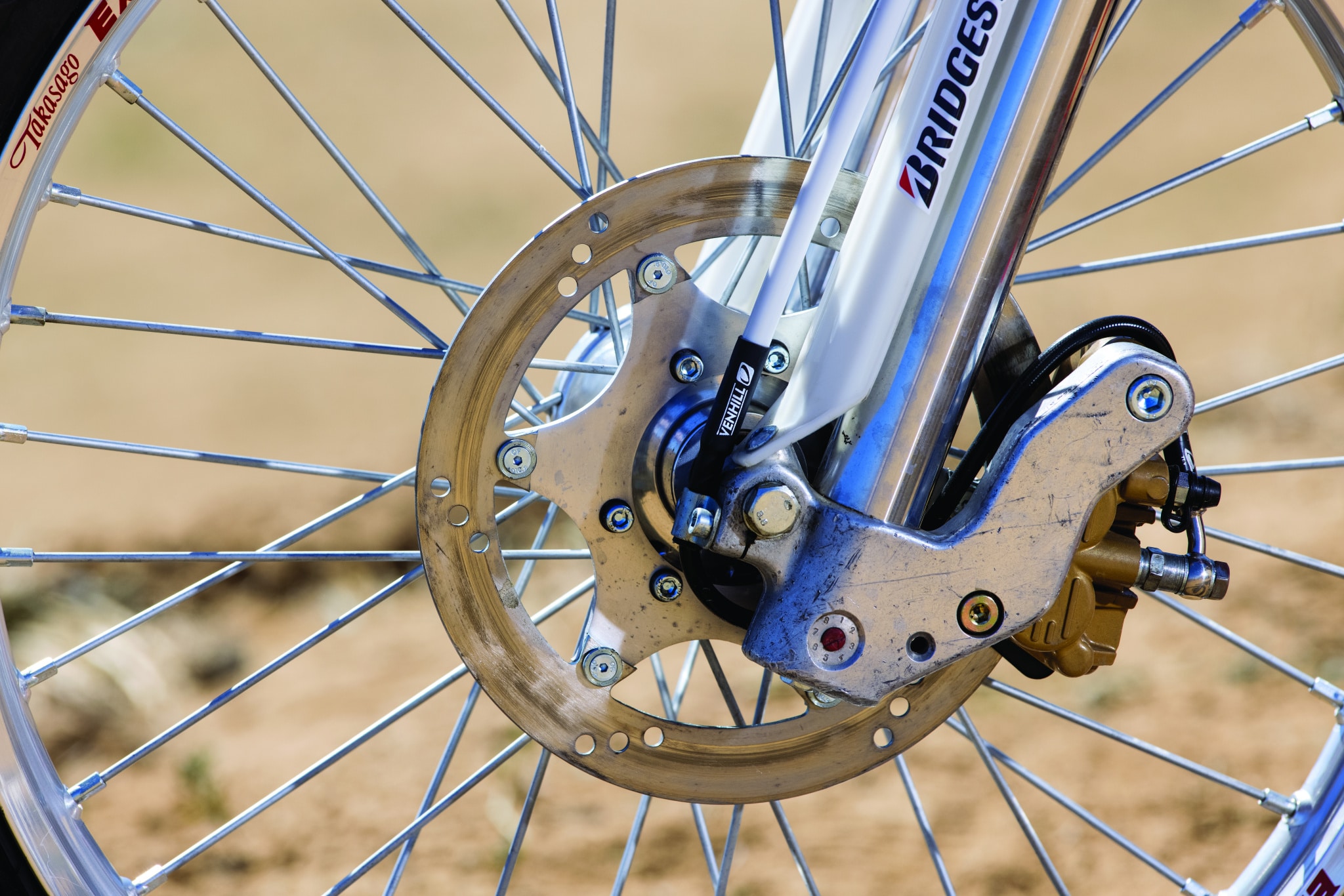
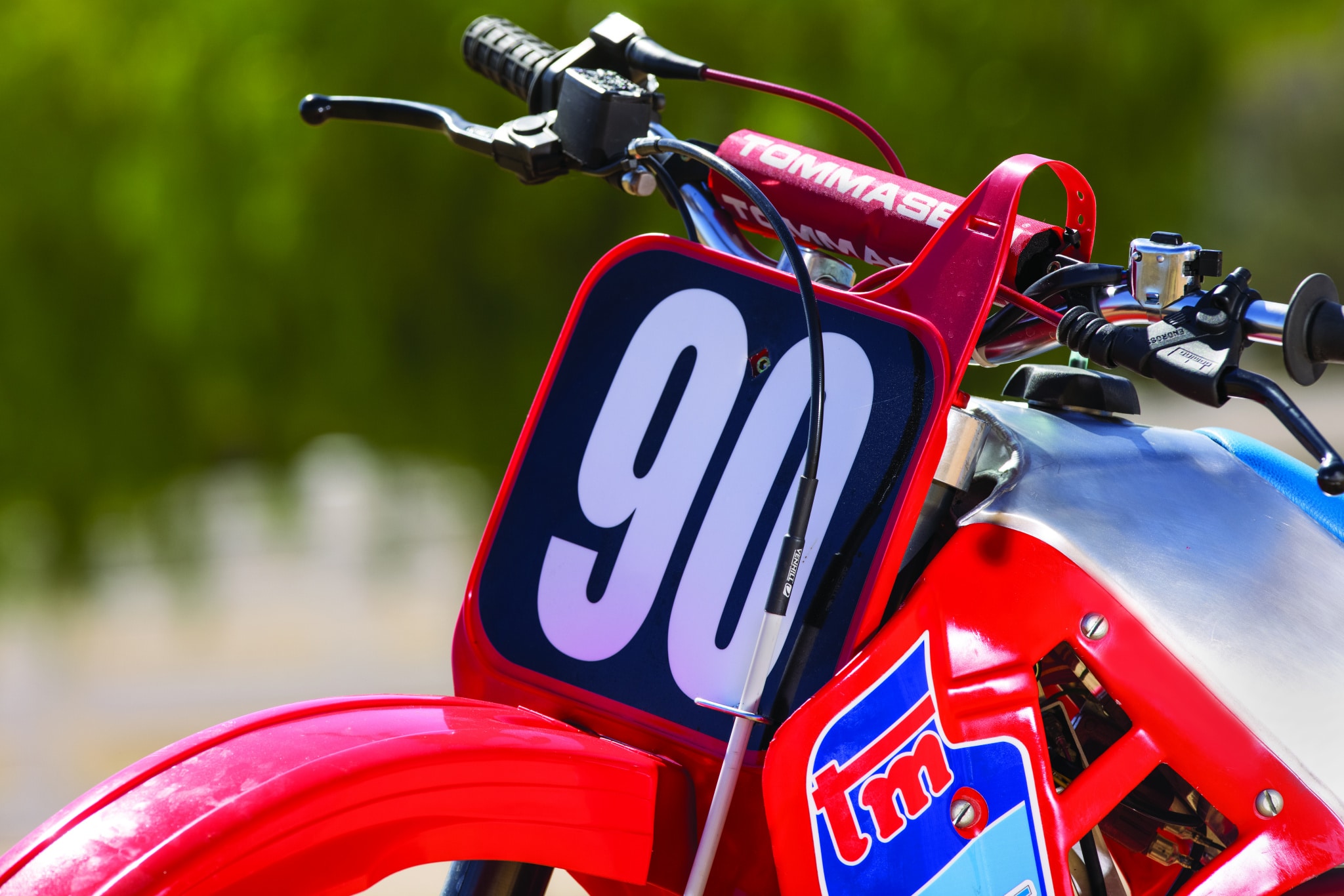
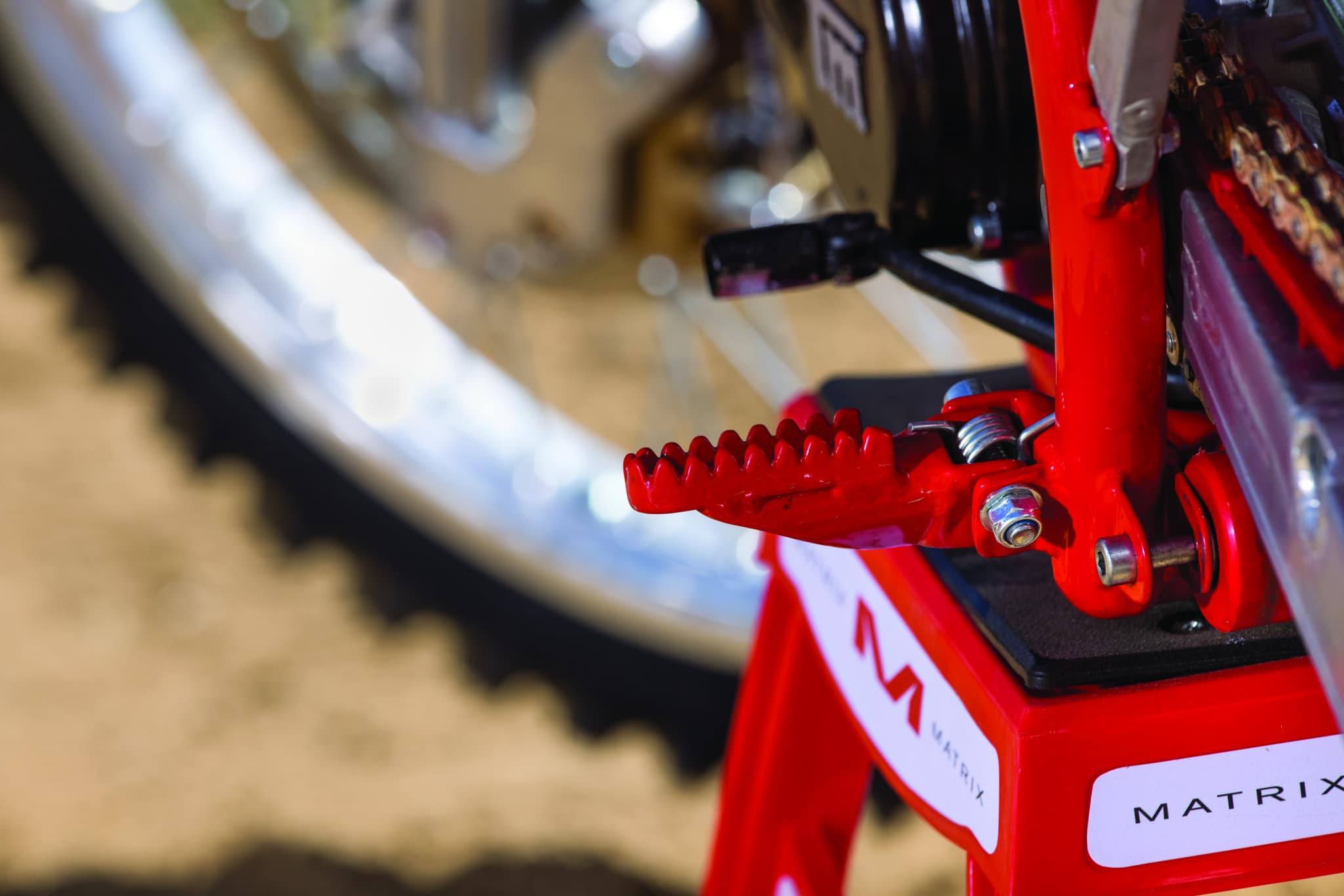
TM IN 1994-1996
In 1994, TM decided to change its color from red to pink. You either loved it or hated it, but it certainly stood out. In 1994, TM used 1994 RM125 plastic, which made the bike look like a Suzuki with pink plastic. If you owned one of these pink bikes, someone would always ask, “Is that a women’s bike?” I still laugh at those years with TM, but the competition couldn’t laugh when they got passed by the pink bikes, because they were very fast. Italian TM racer Massimo Bartolini got the pink TM on the podium a few times at the 1994 FIM 125 World Championship and, in 1996, Luigi Seguy finished fourth overall in the 125 World Championship. On a technology front, TM was the first manufacturer to introduce a hydraulic clutch on a production bike in 1995.
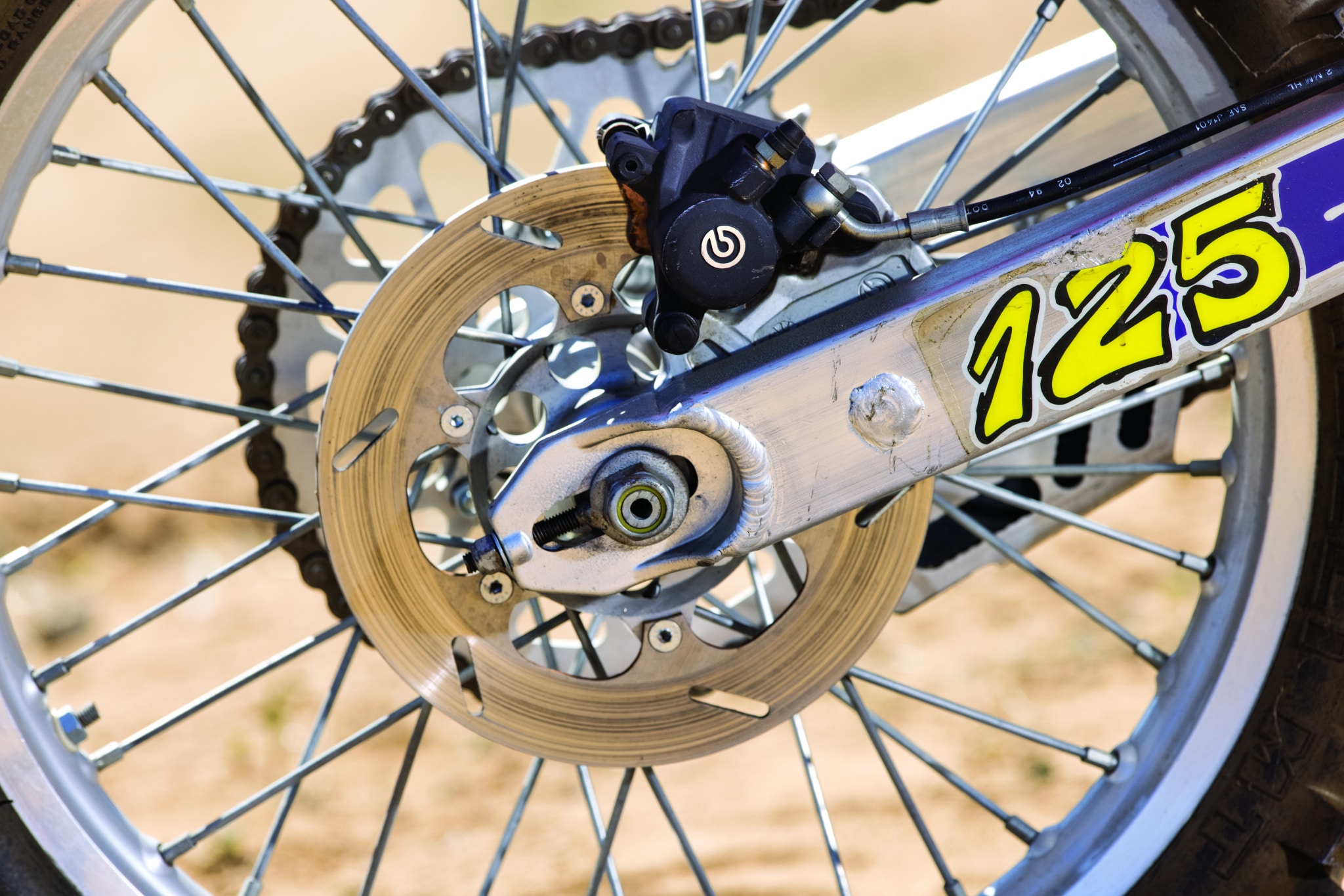
TM IN 1997-2000
In 1997, TM realized that pink wasn’t the color they wanted to represent their brand and switched over to blue (using a mix of Yamaha and Kawasaki plastic). My collection is missing the 1997-’98 125cc (I only have a 250cc from those years in my collection). These were important years for TM, as Alex Puzar won a lot in the 125cc World Championship, finishing second overall in 1997 and third in 1998 on those bikes. This generation TM engine was a hot item in Europe, as it offered the most horsepower output in the class. To this day, these engines are used for go-karts because they produce serious top-end power. TM also started building engines for other manufacturers, and up to 1999, GasGas was using TM engines in all its models. In 2000, the TM race team program tried to catch up with the “golden years” of Puzar and had Trampas Parker and Philipp Dupasquier running top five most of the time. Ever since TM entered the World Championship, all of the development work was done by the factory riders. This may seem like a great idea, but it made the bikes very “Factory” and hard to ride for the average Amateur. In those years, you would love the TM if you were a Pro rider, but it was hard to ride if you were an Amateur.
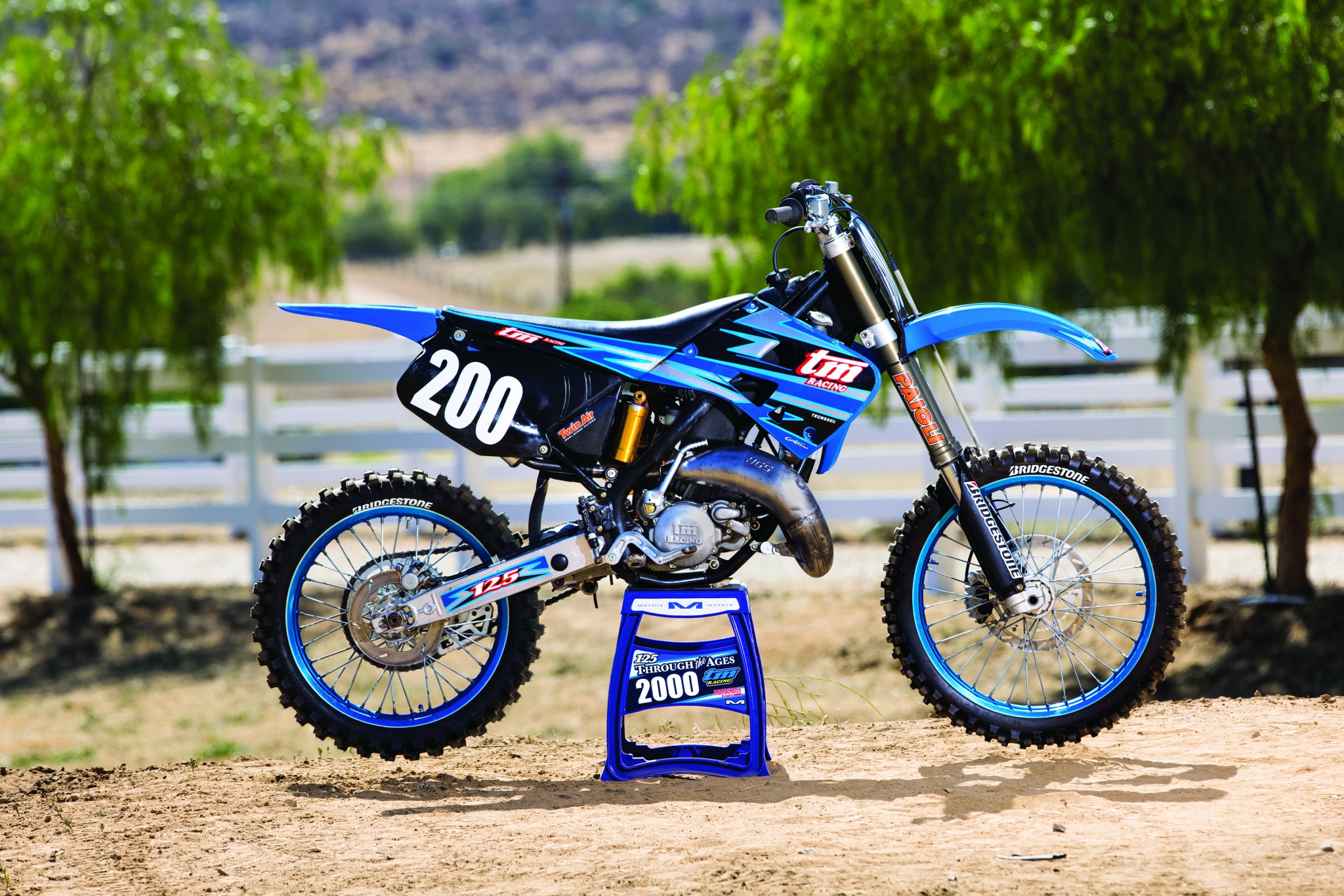 2000 TM 125.
2000 TM 125.
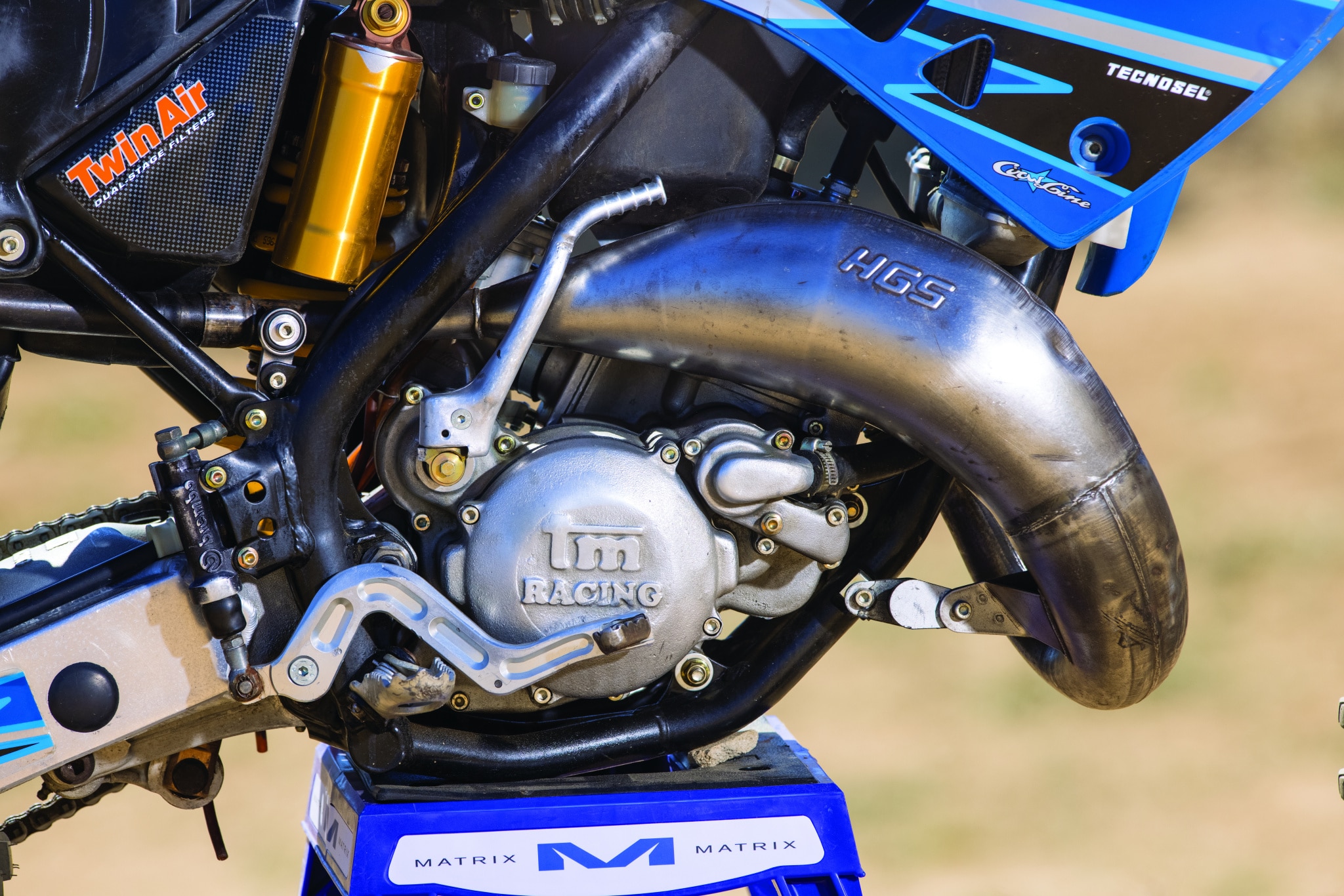
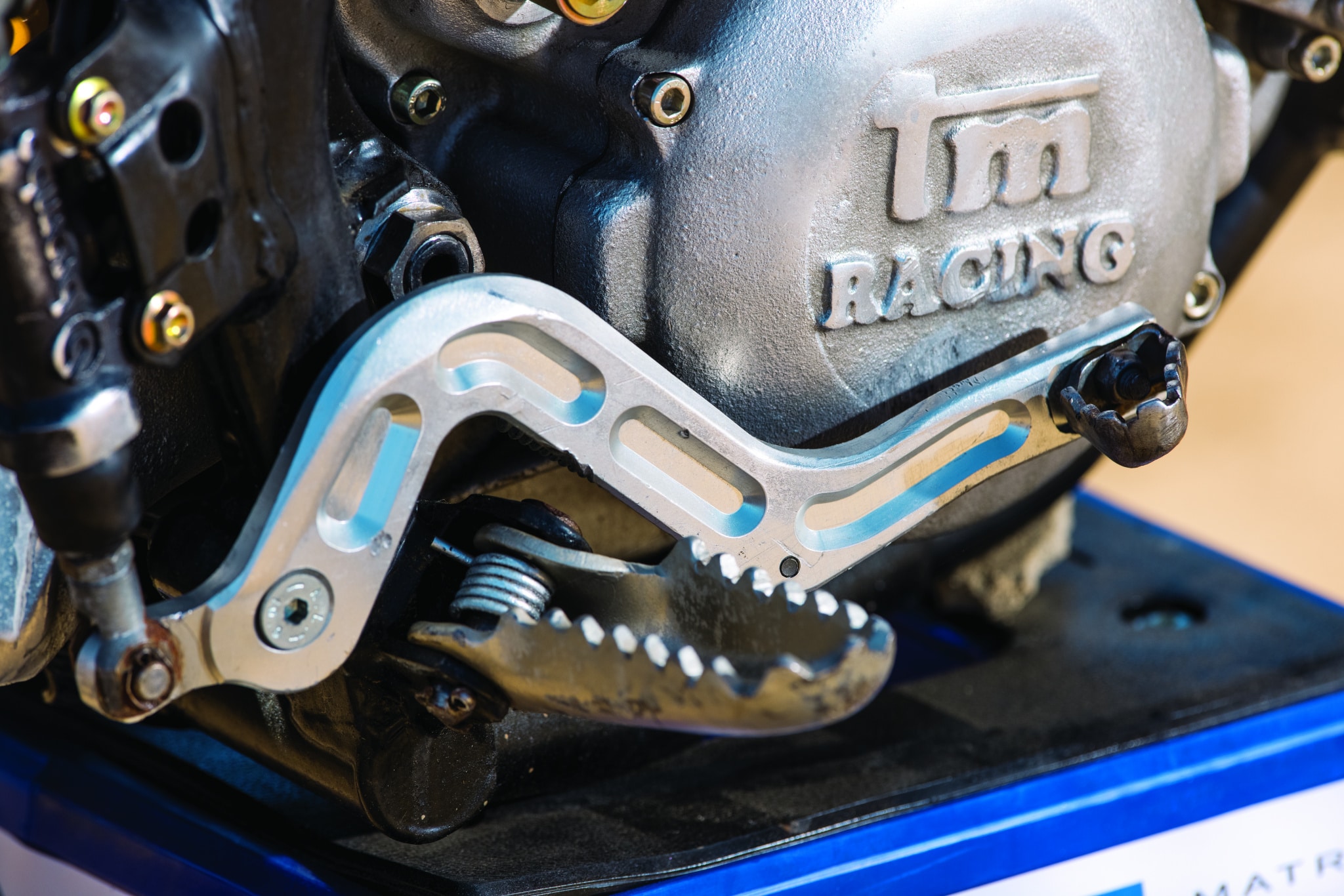
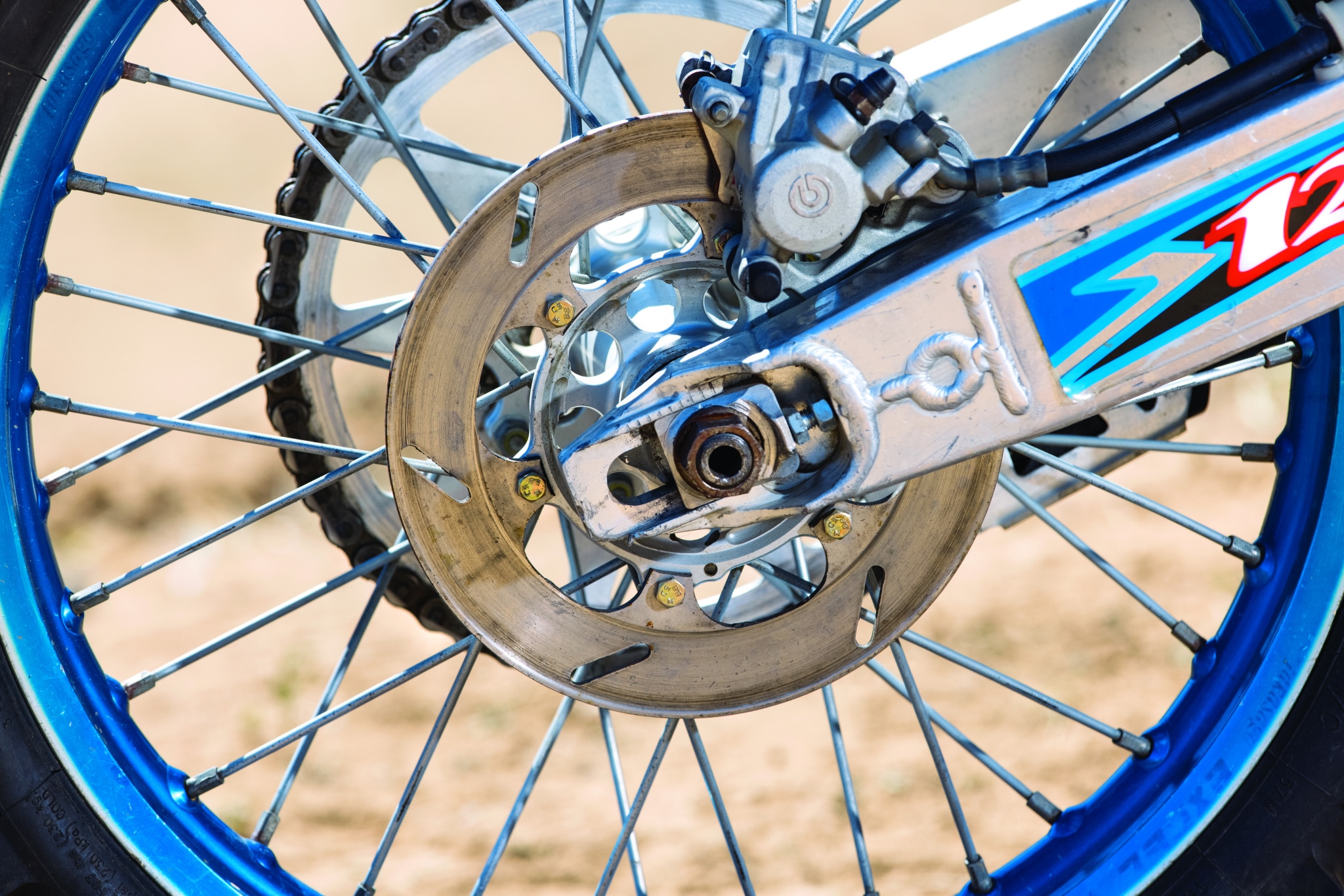
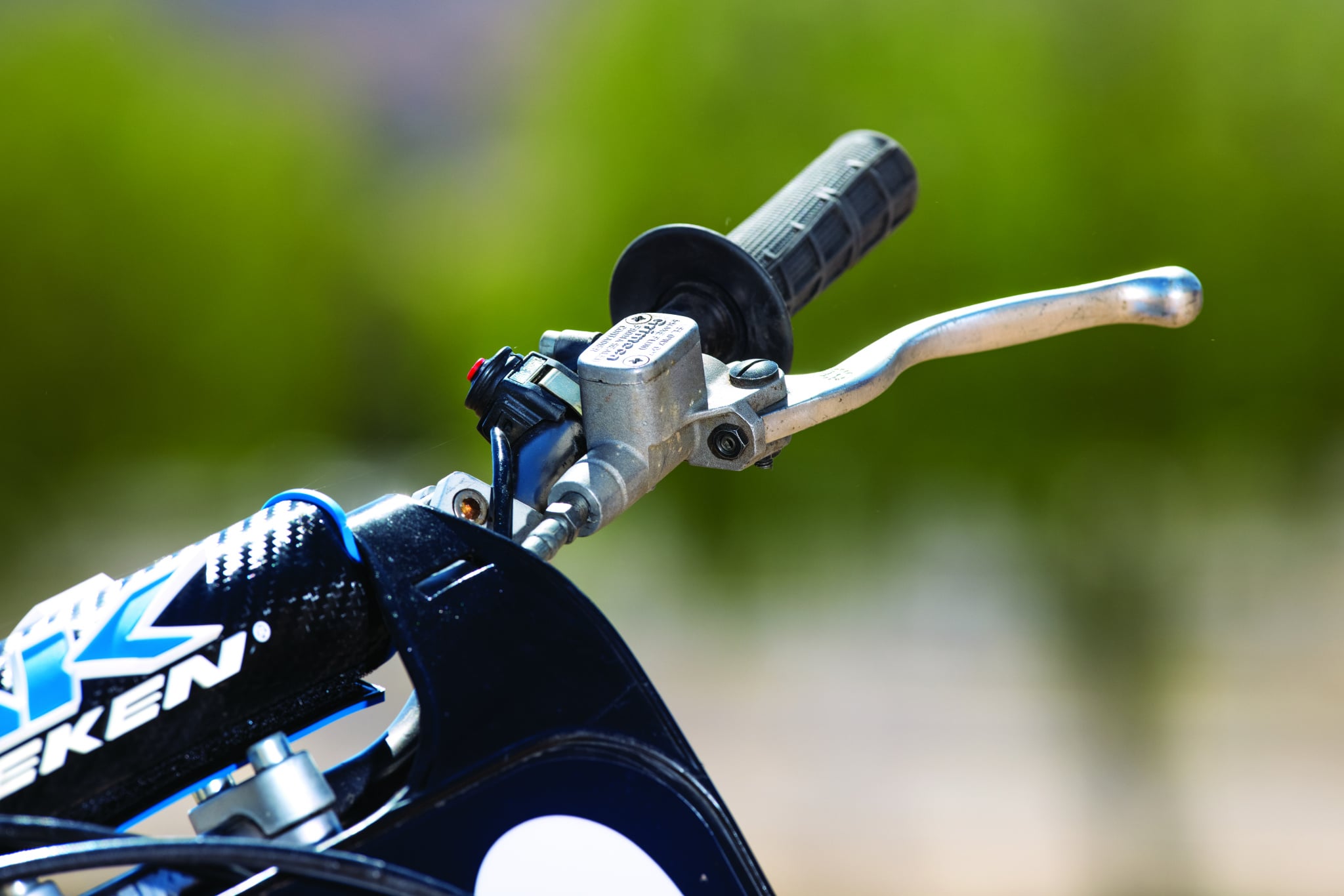
TM IN 2002-2003
Back in 2002, three-time World Champion Harry Everts (father of Stefan Everts) ran a TM 125 factory team from Spain. The bike in my collection is the race bike of Belgian Jurgen Wybo, who was a privateer racing the 125 GPs for the German TM importer (Mike’s Bike Shop). It is a hand-built bike by the importer with factory parts, which I personally raced with in Holland for years in the amateur federation. A V-Force reed cage came stock in 2002. This bike offered the best parts money could buy at the time.
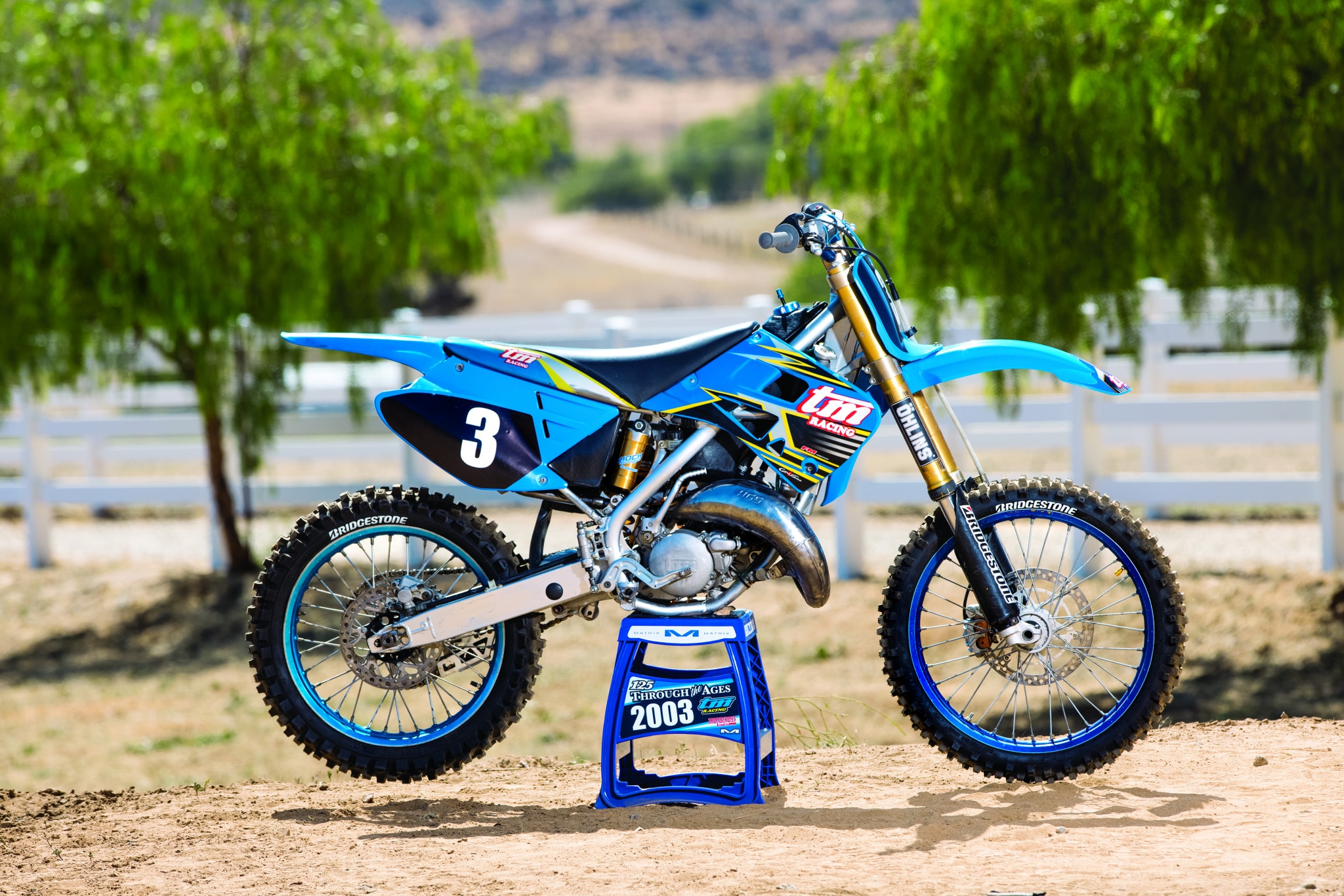 2003 TM 125.
2003 TM 125.
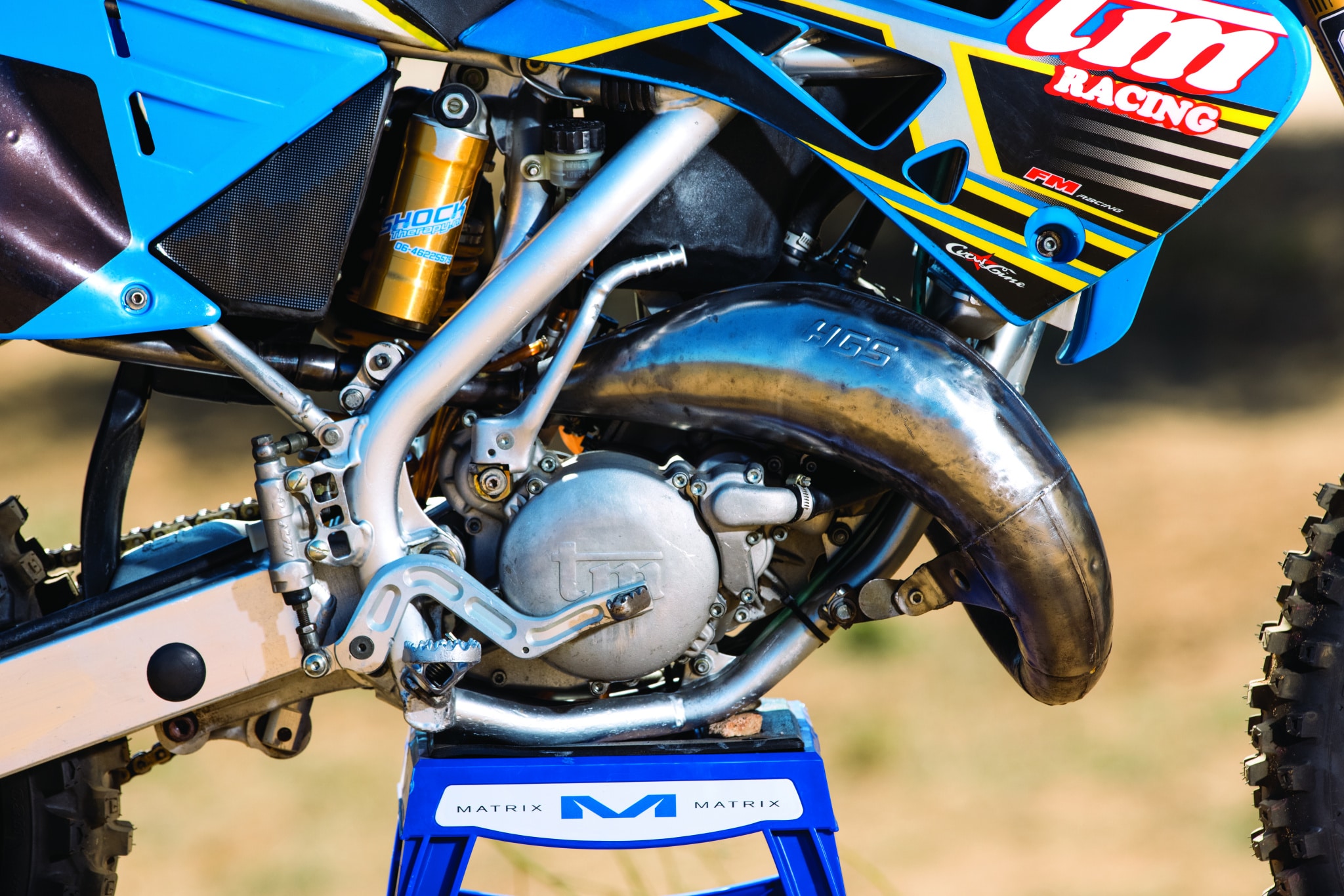
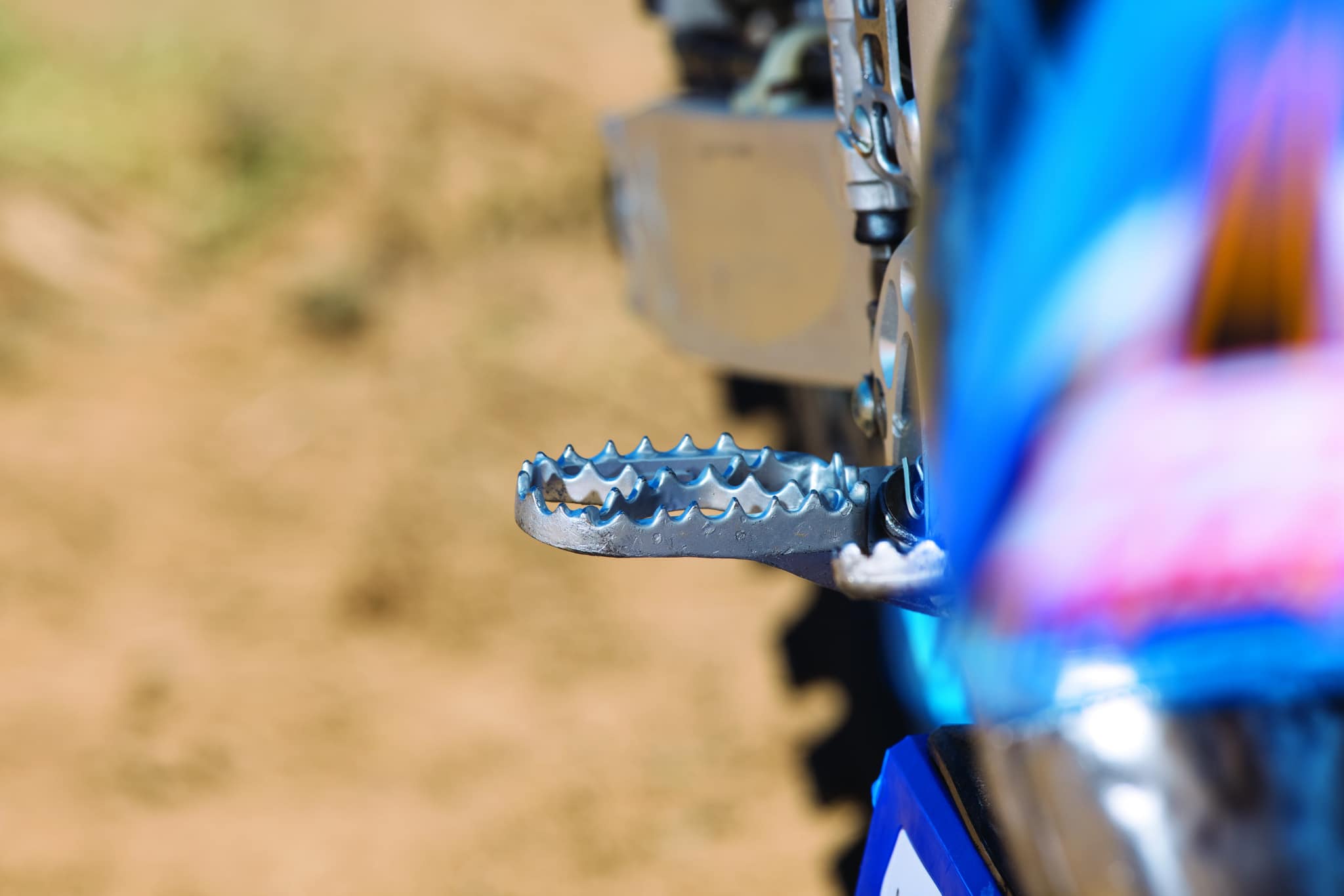
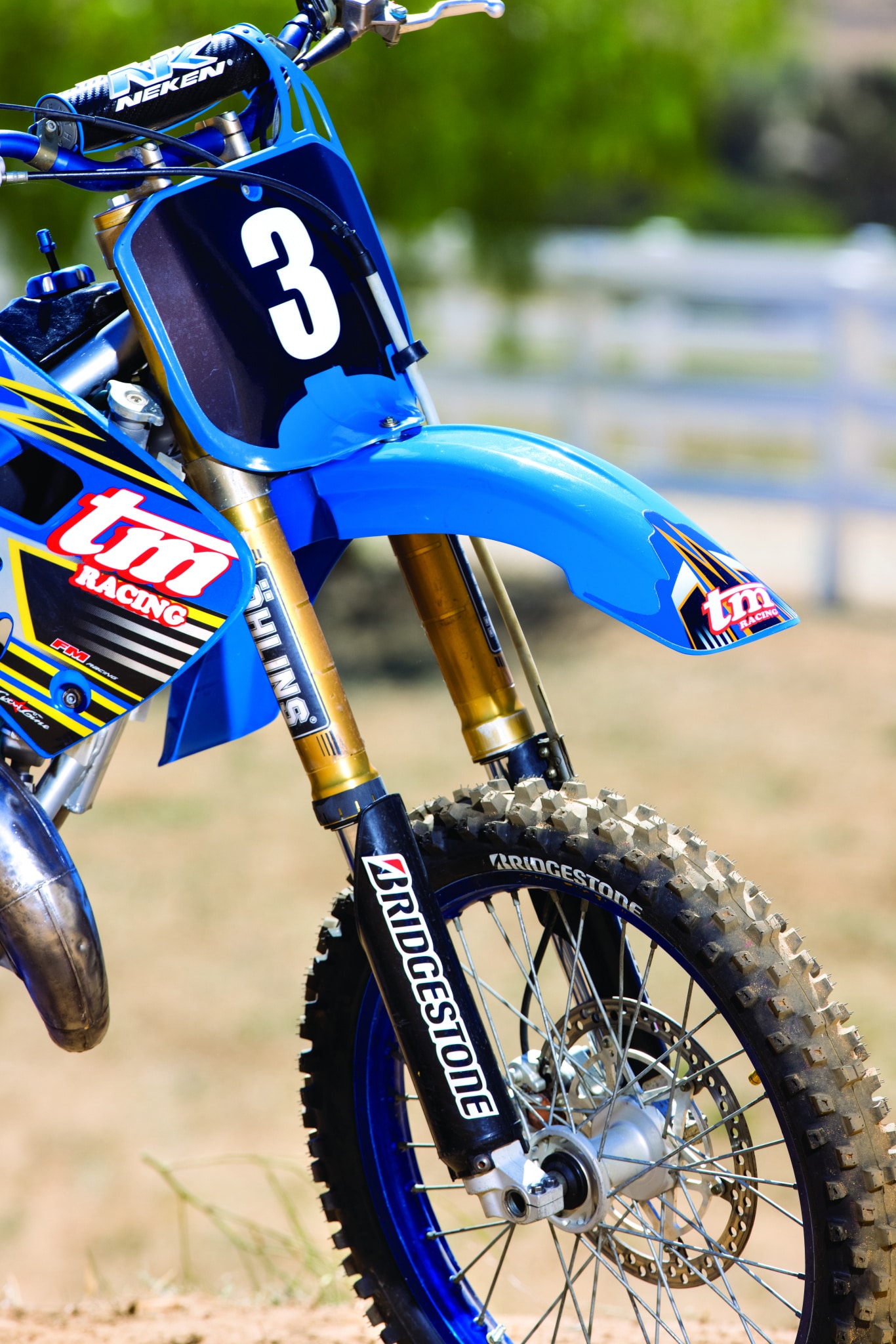
TM IN 2004-2007
From 2004 to 2007, the TM 125MX didn’t change in looks very much, but the engines changed drastically. The weight of the bike was also reduced by going from casting to pressure casting, which allowed for thinner cases and covers. This was also a period when TM called a halt to its 125 World Championship effort to focus on making a solid 450cc four-stroke as the world was switching its attention from two-strokes to four-strokes. On a side note: In 2007, TM was the first manufacturer to make a 144cc motocross bike, which was a huge improvement for every Amateur, as it finally had the bottom-end power everybody was looking for and still offered the 125cc over-rev.
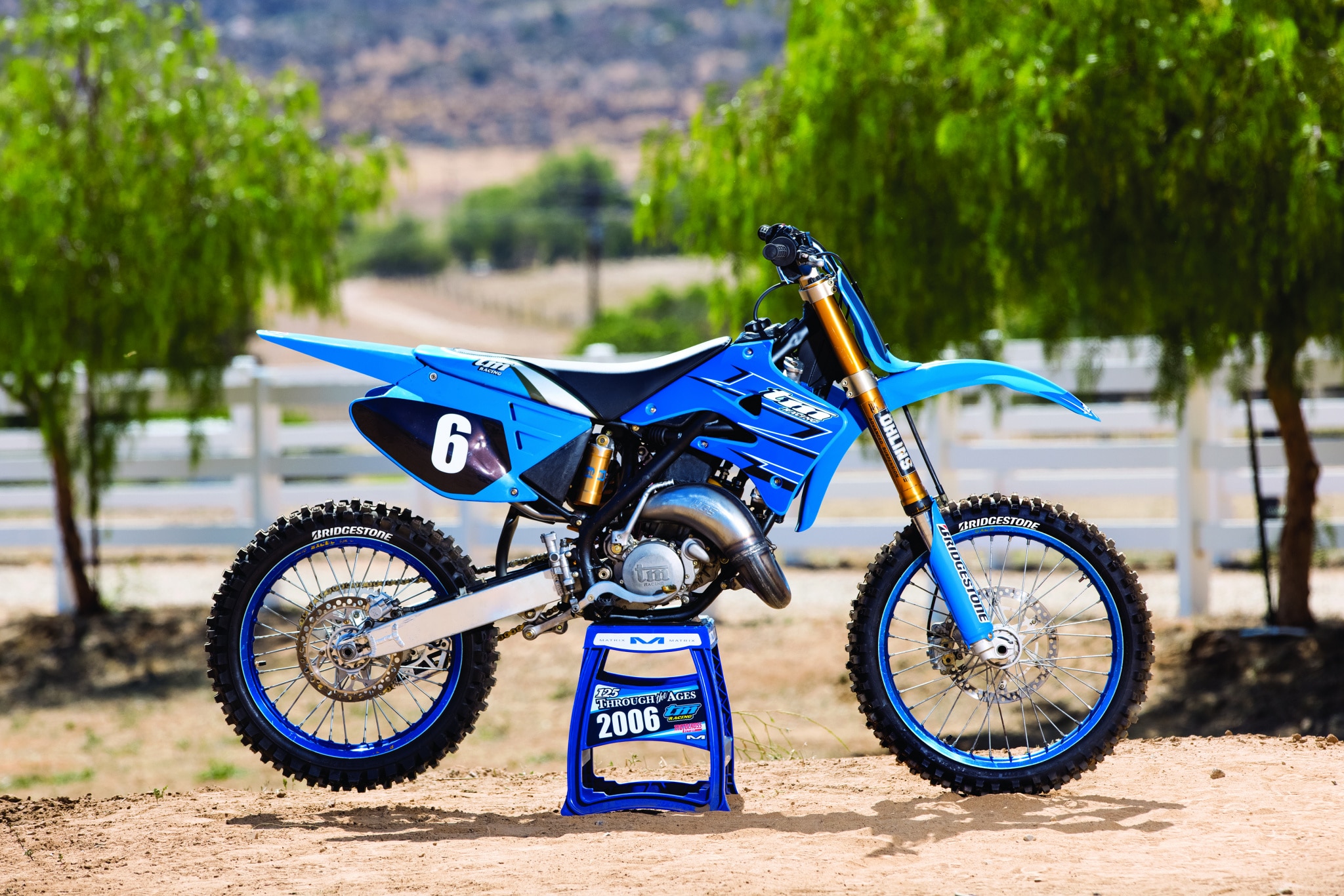 2006 TM 125.
2006 TM 125.
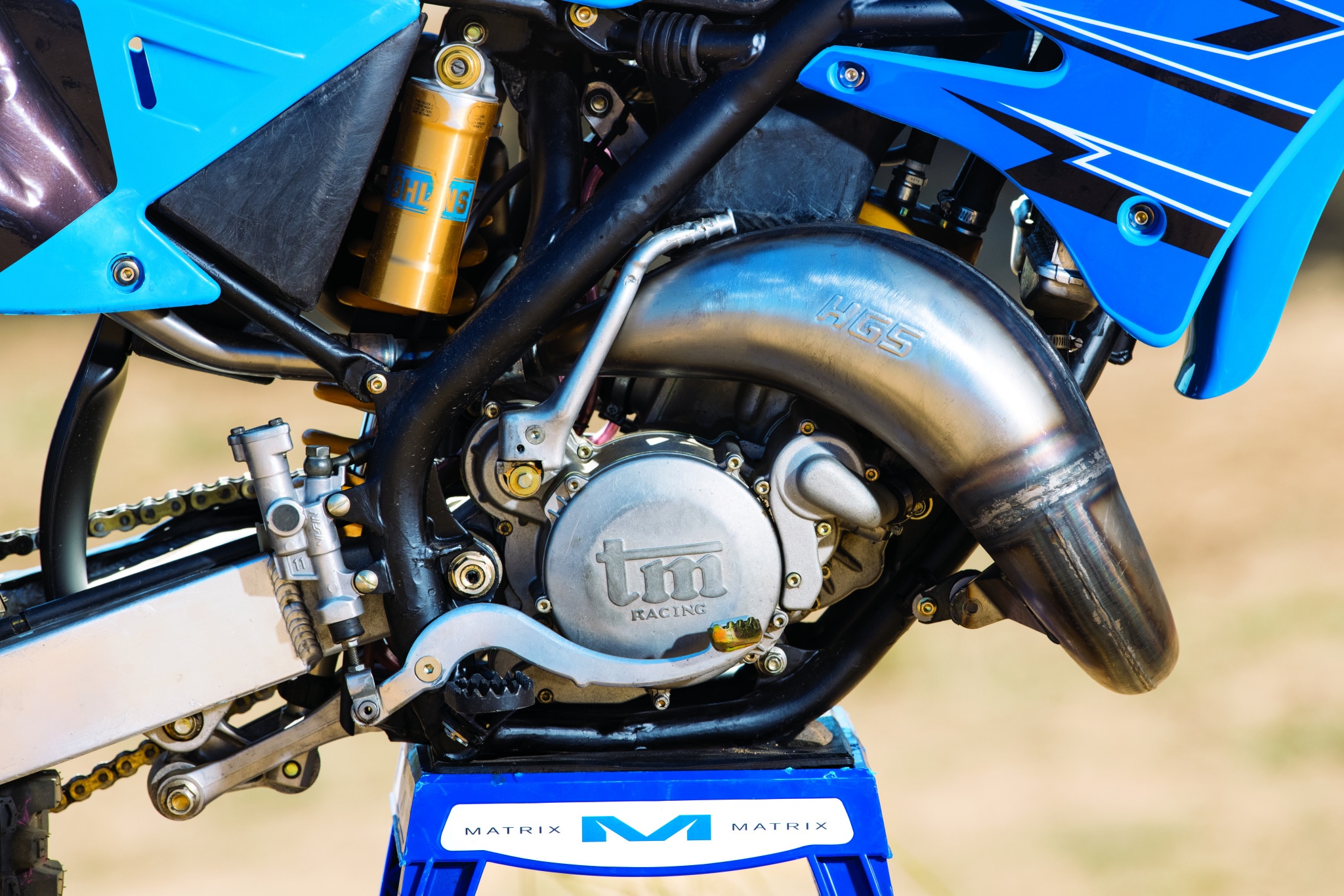
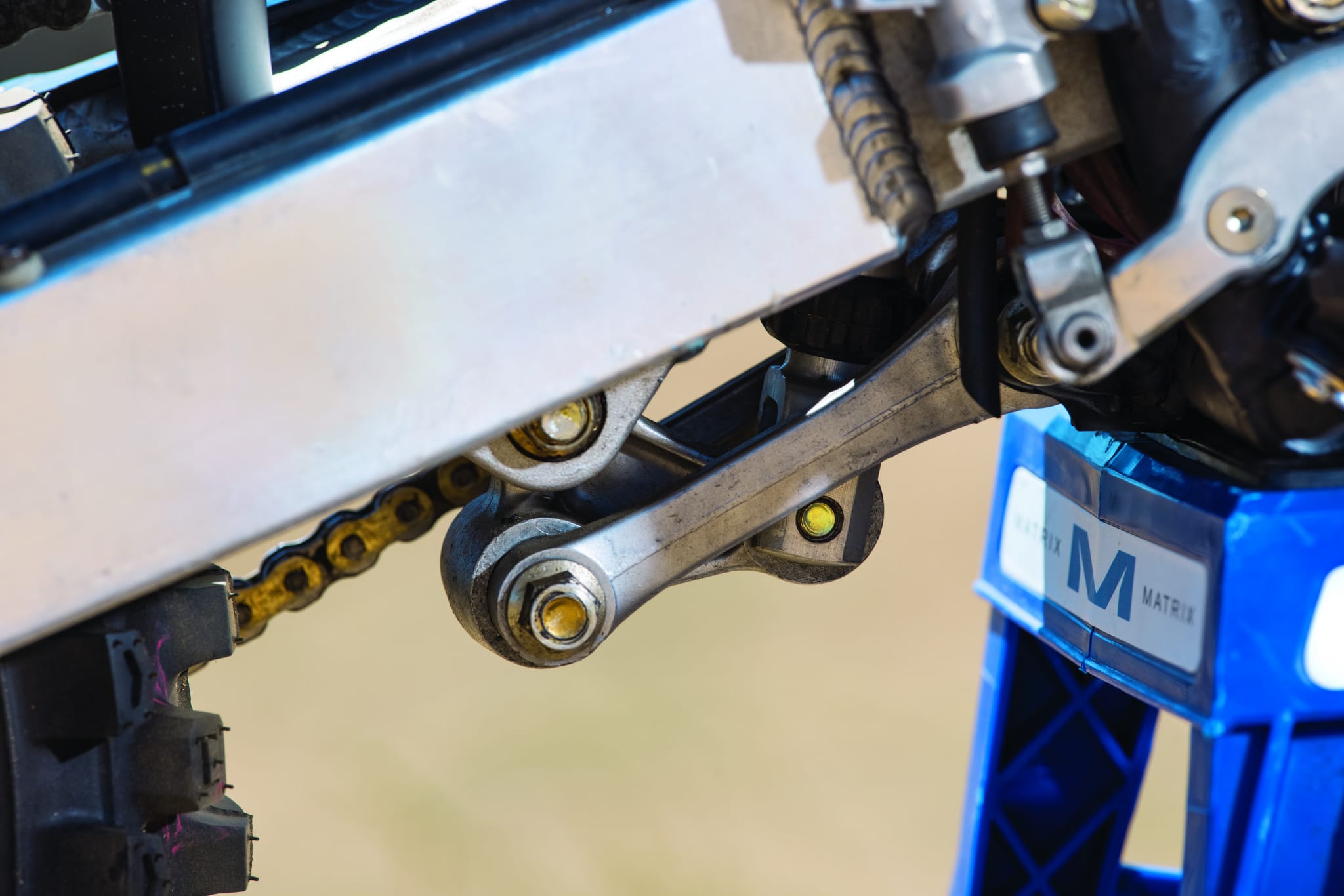
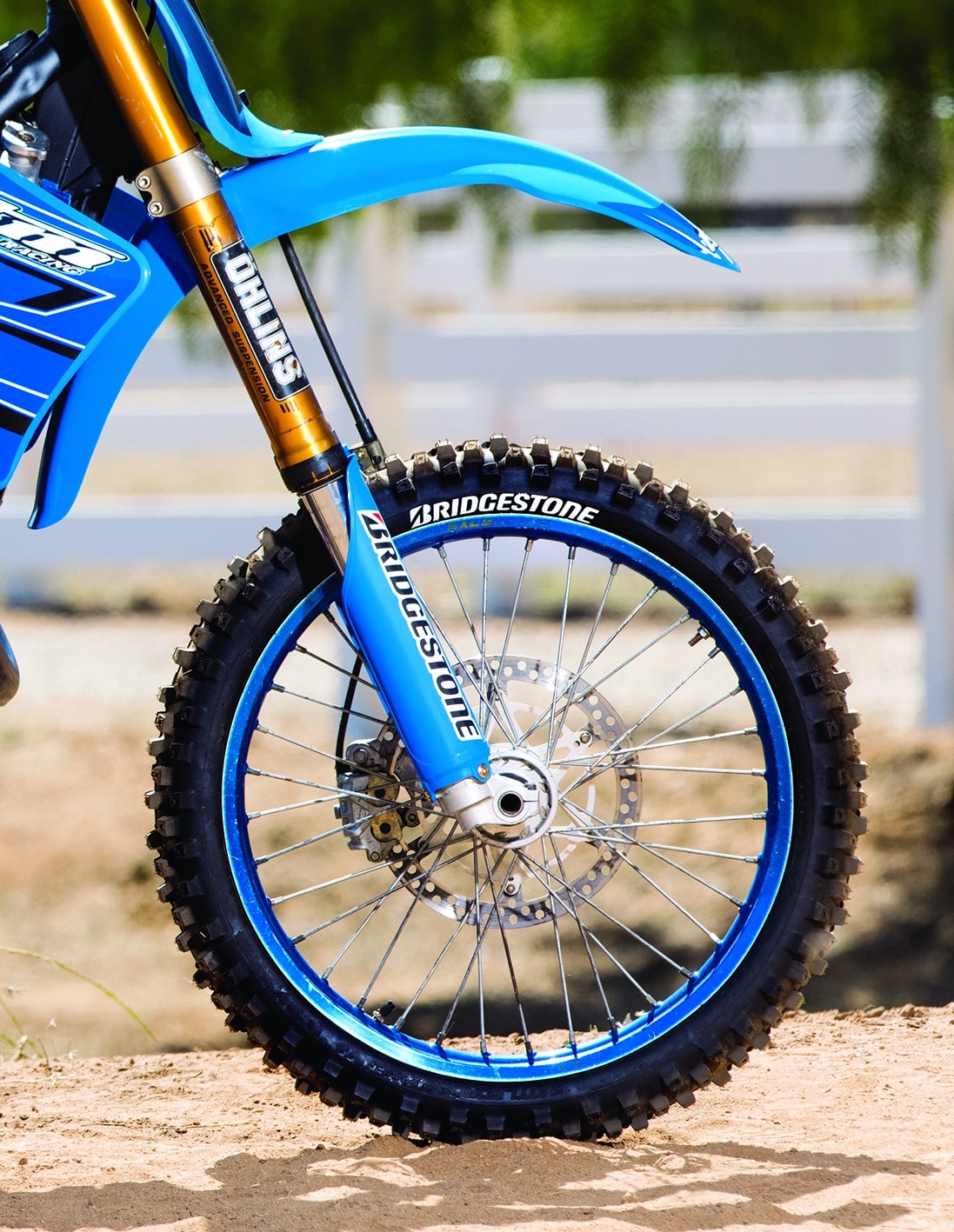
TM IN 2010-2011
When Youthstream introduced the European EMX Championship within their MX2/MXGP program. TM was back on board with its 125 bikes with a bunch of riders in a stacked field with riders like Tim Gajser, Pauls Jonass and Jordi Tixier. In my opinion, the 2010–2011 TM 125MXs were the best overall performing 125cc bikes TM ever produced. They had enough bottom-end power to not require abusing the clutch, and they did not need to be shifted as precisely, as the powerband was really wide and very forgiving. The chassis felt more like the current modern-day bike, just as long as you stayed away from the 50mm Marzocchi Magnum forks. The bike in my collection was equipped with the Kayaba forks and has an Ohlins shock that was an option from TM. There was another small Italian manufacturer called TGM that modified TM 125cc models and released them as their own.
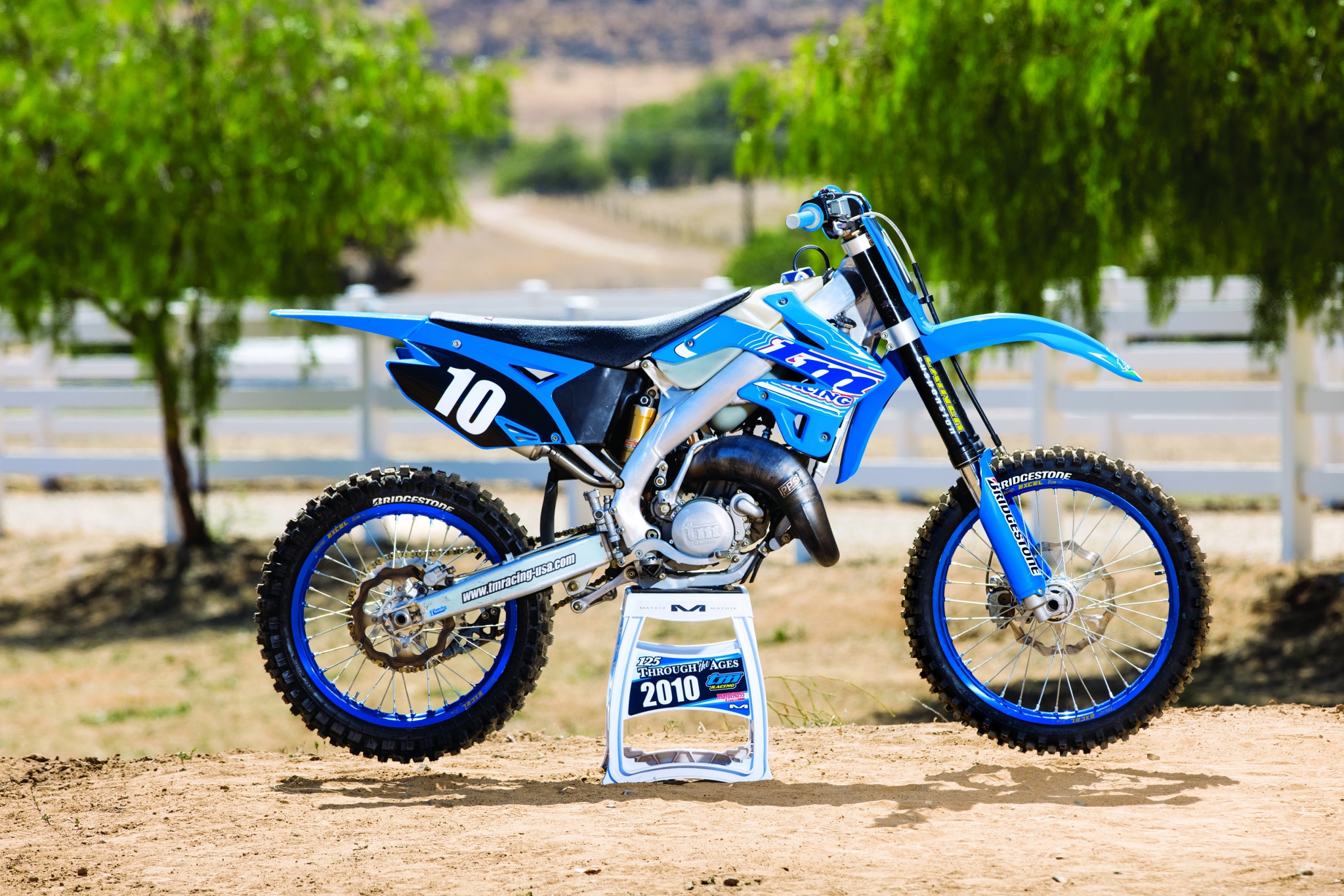 2010 TM 125.
2010 TM 125.
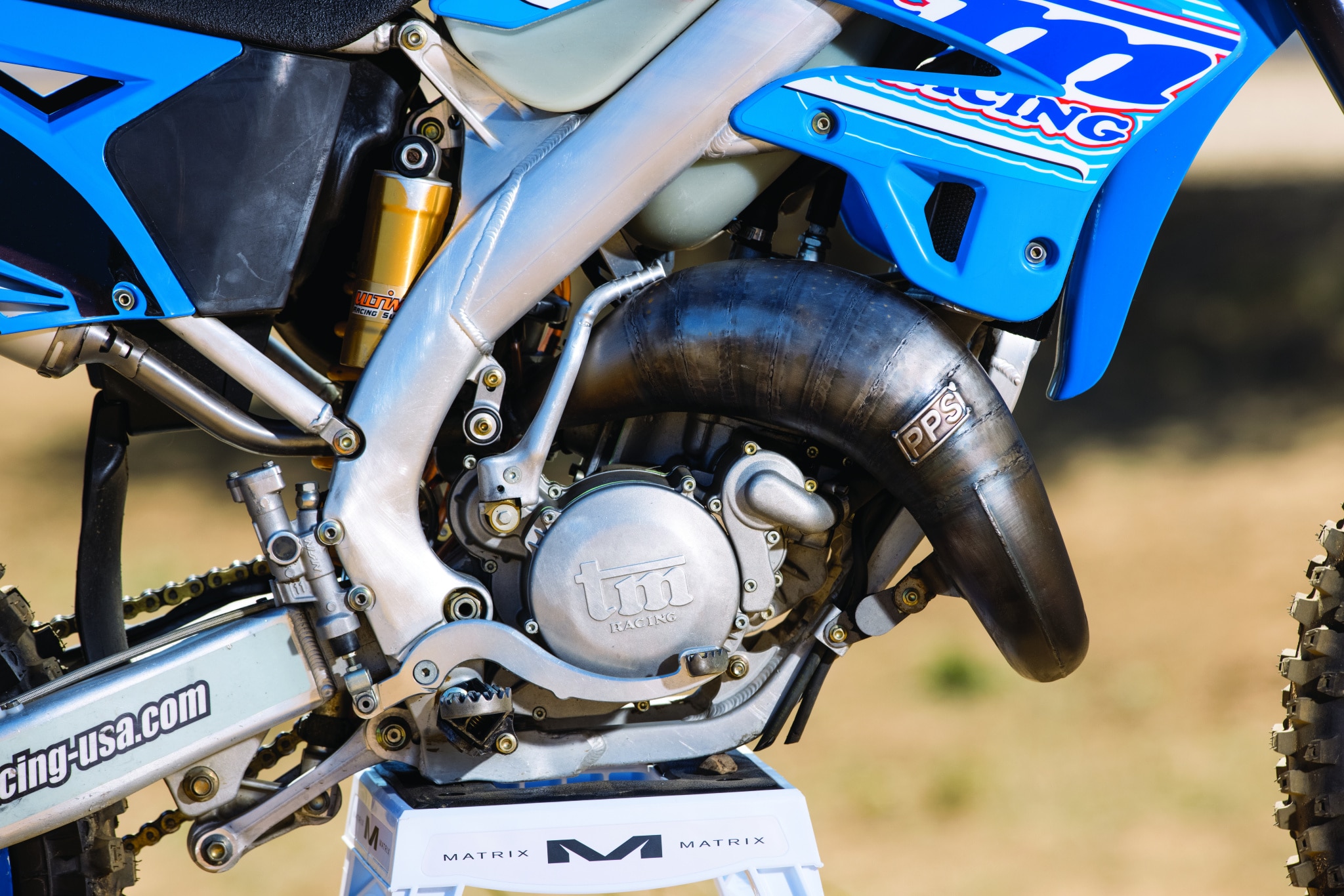
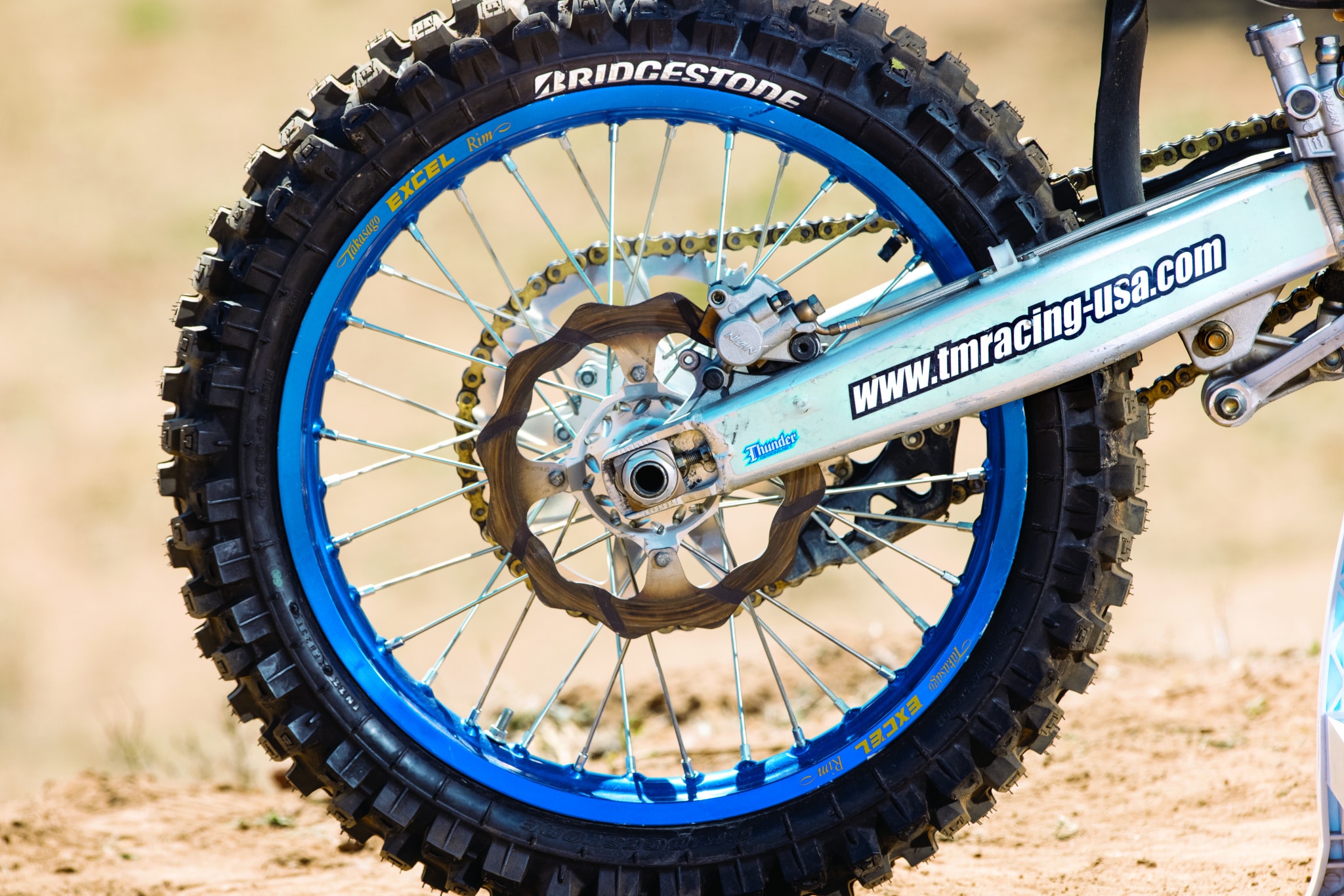
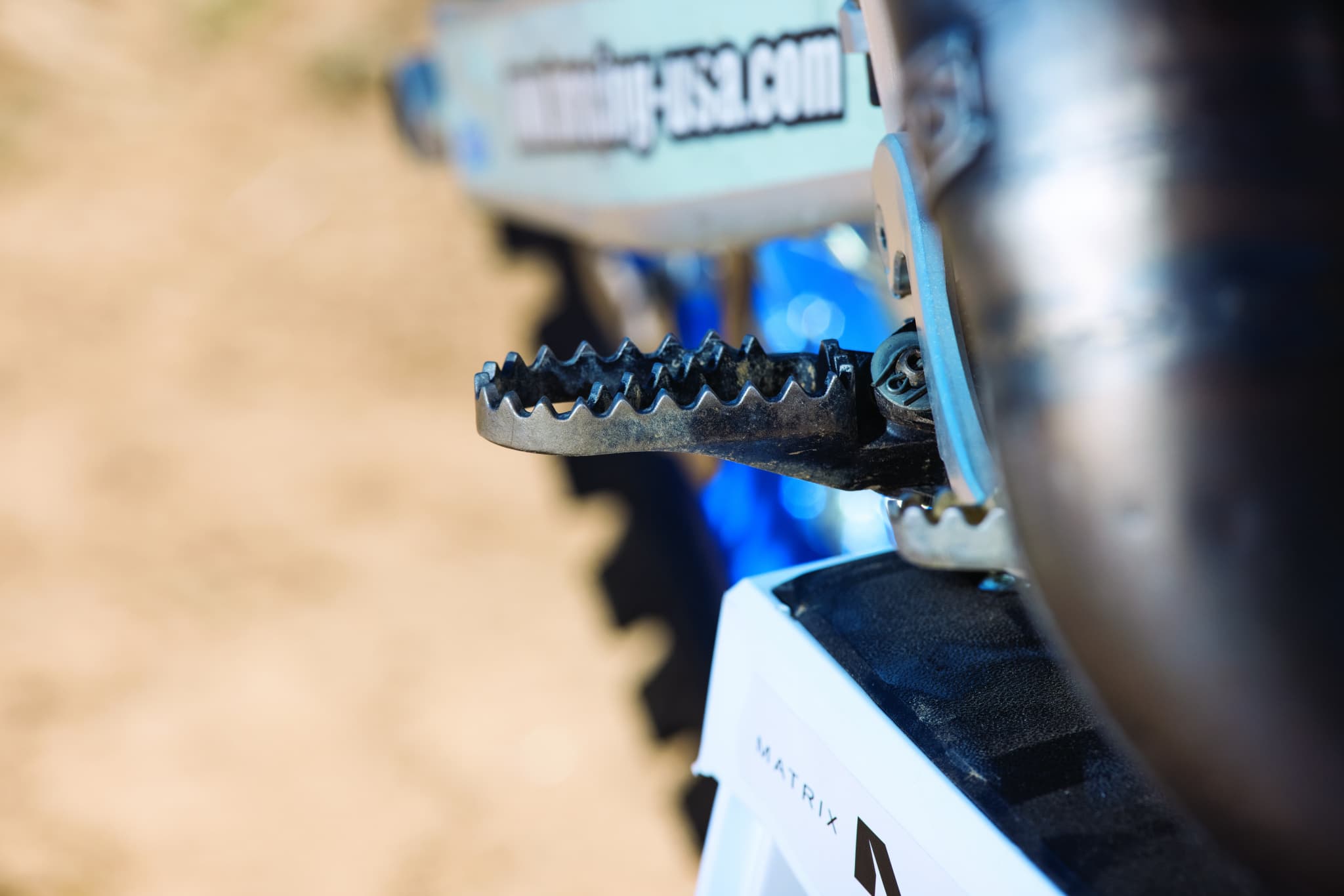
TM IN 2012-2015
We did not import the TM 125MX in 2012 or 2013, as the launch of the electronic servo system, updated engine and proprietary shock was not what it should have been. Blood, sweat and tears describe those years for TM. TM went back to the drawing board and made some updates that were a huge improvement. Looking back, this was all a step towards their latest update, as fuel injection and the electrical servo go hand in hand. The riders who helped in the development were selected by the Italian federation and were put on TMs to race the 125 EMX Championship. Mattia Guadagnini (KTM factory rider now) was one of the fastest TM youngsters. The bikes had more of the character of the late ’90s factory bikes, making them all top end and harder for less skilled riders to handle.
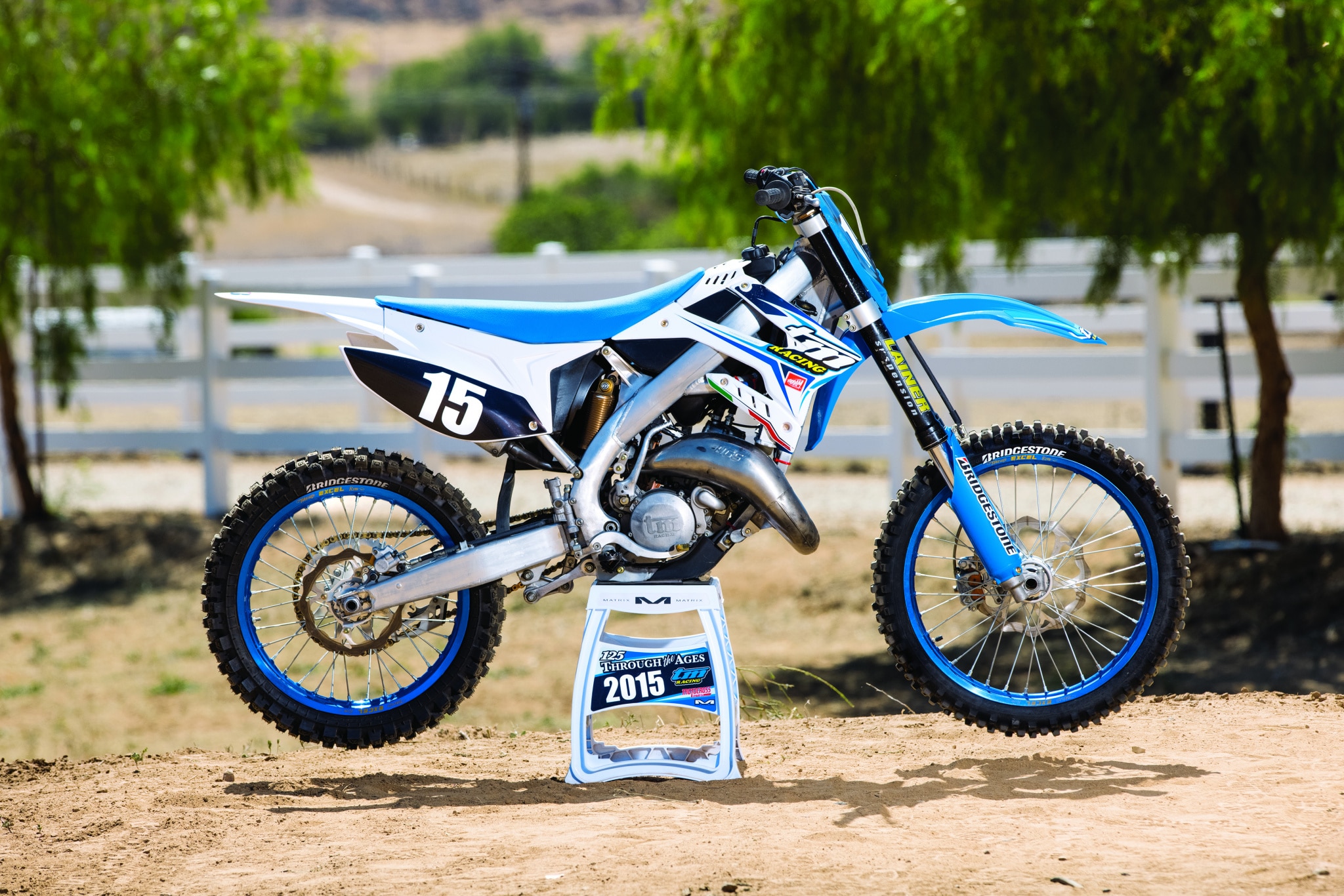 2015 TM 125.
2015 TM 125.
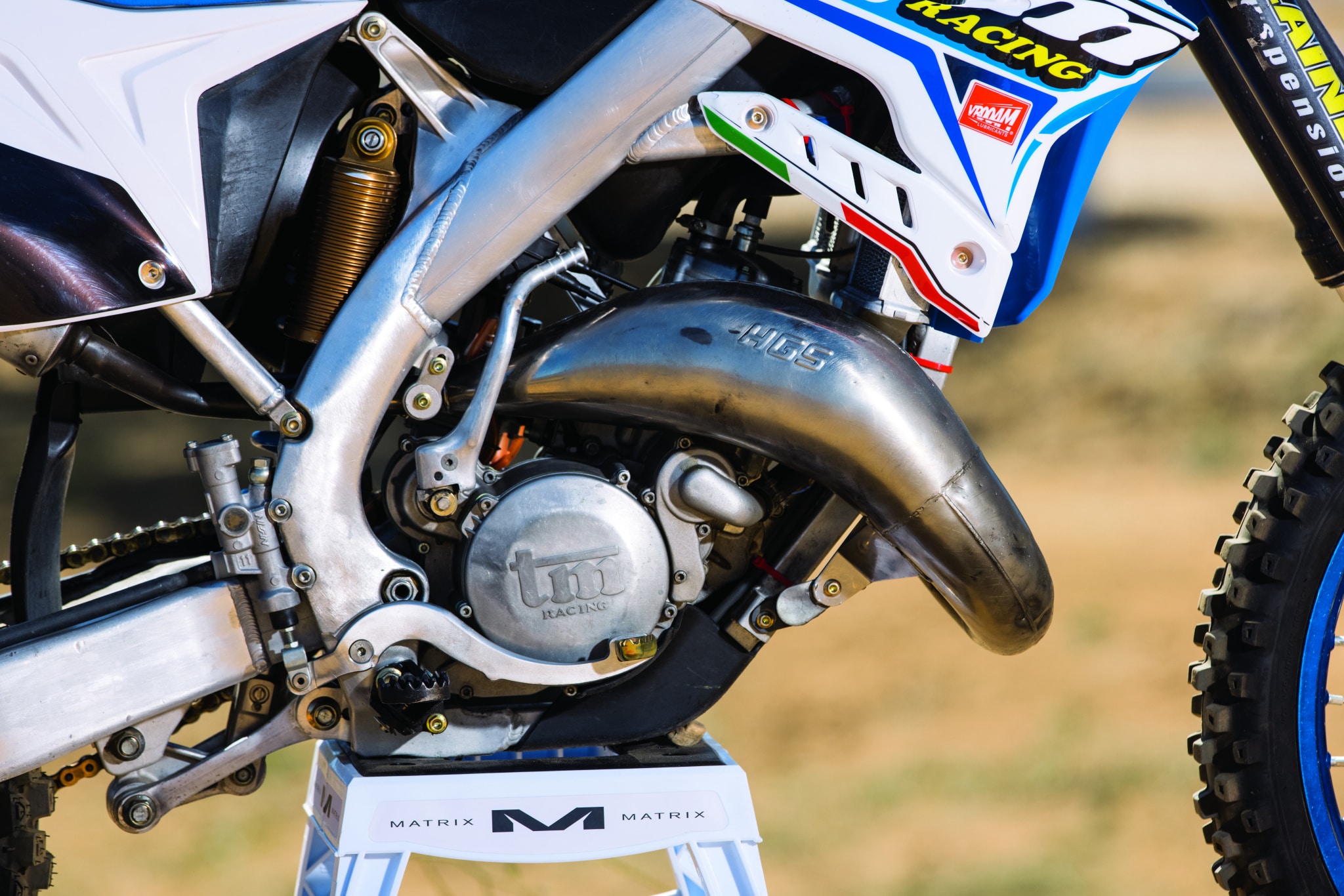
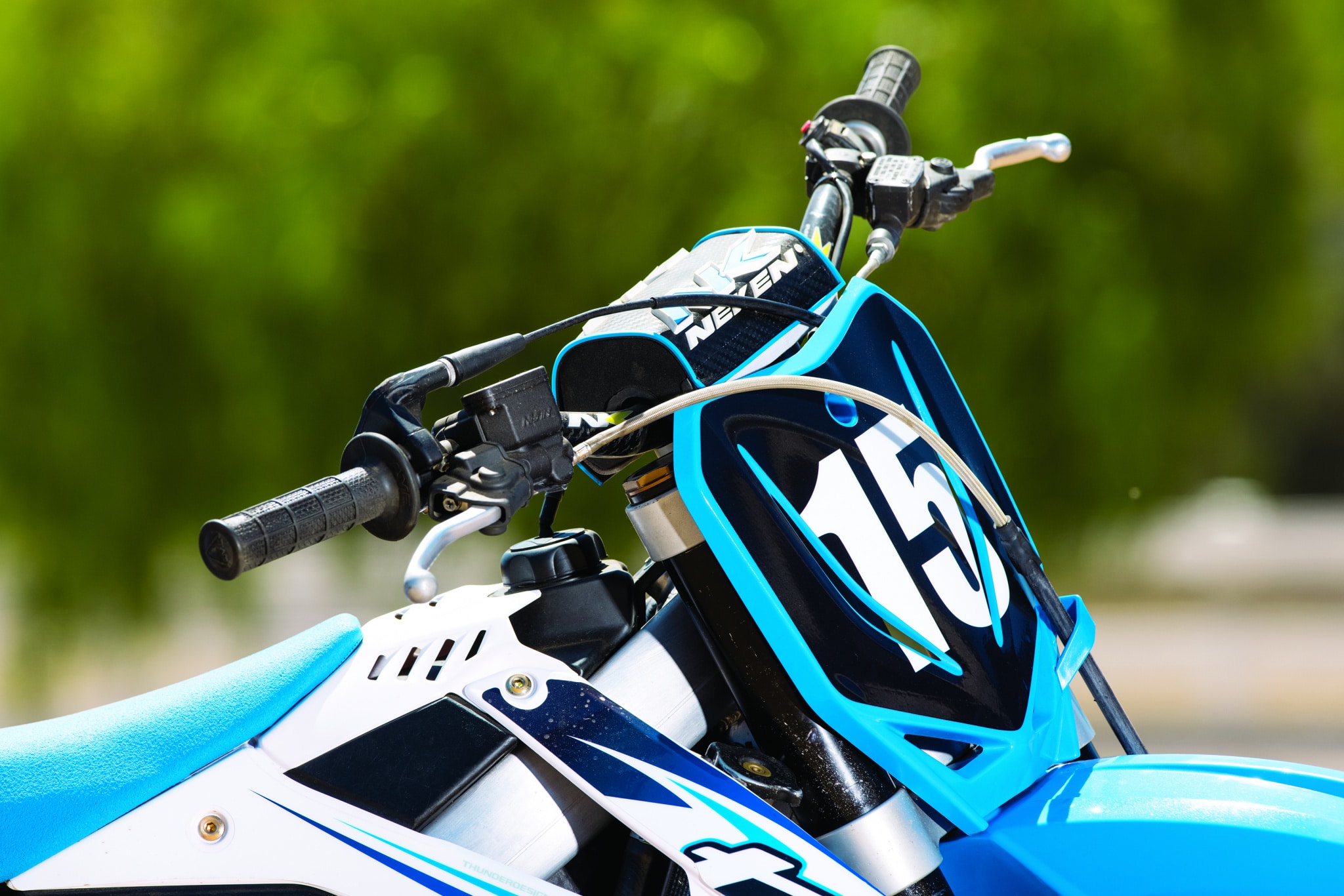
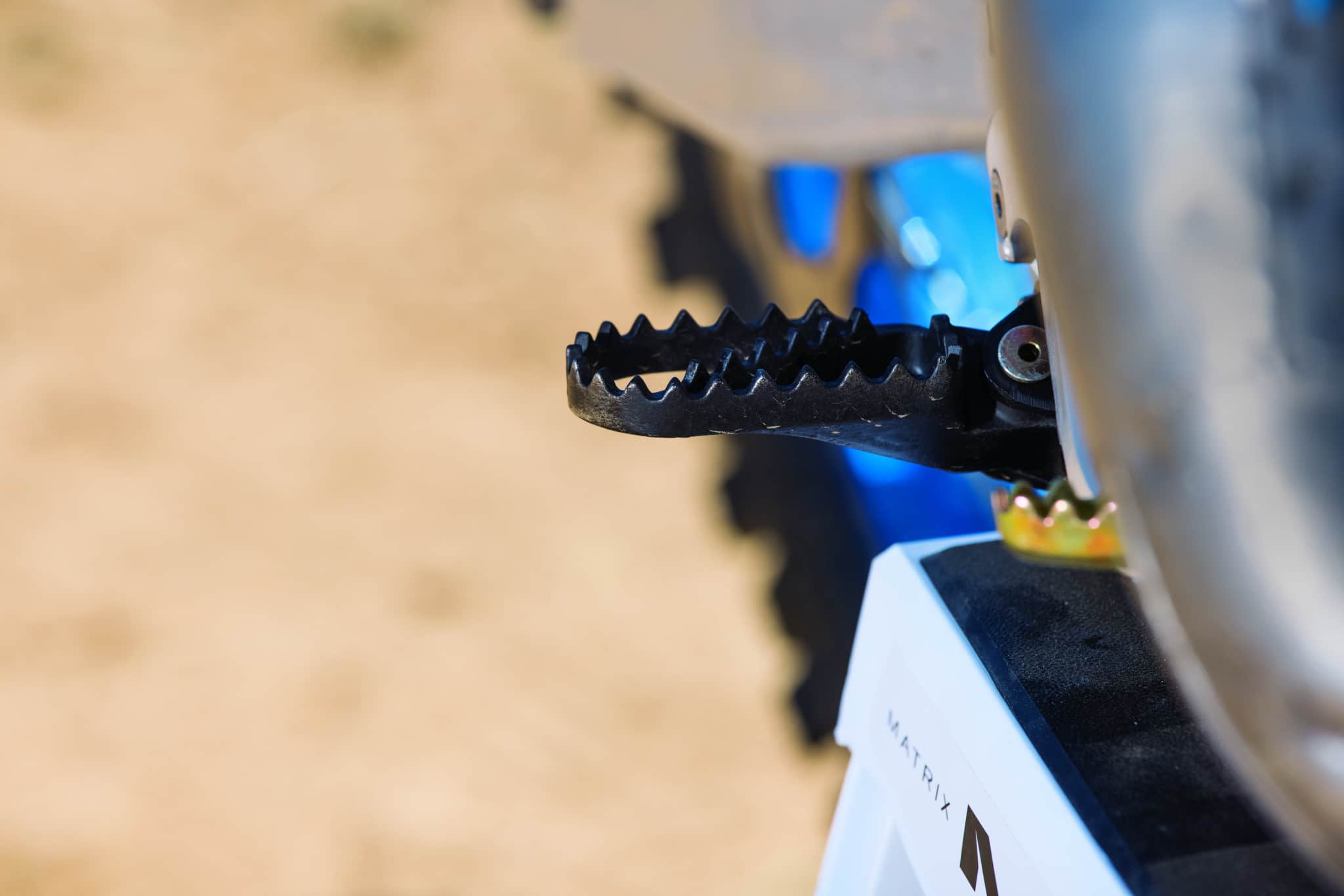
TM IN 2020-2021
In 45 years the TM 125MX went from air-cooled to fuel-injected. TM has been one of the few manufacturers that actually dared to try to build an EFI 125 (it took KTM more than 10 years to develop the fuel injection on the small-capacity bikes). In 2020, the first few bikes got built, and we worked out many of the bugs. For 2021, we got more updates to the bike, as the transfer port injection got changed to throttle-body injection. MXA will start testing that model soon. TM is one of the smallest independent manufacturers in the world who managed to survive the pitfalls of the motorcycle business. After half a century, TM has seen the rise and fall of so many other brands, but it is still alive and well, investing in the future and trying new things.
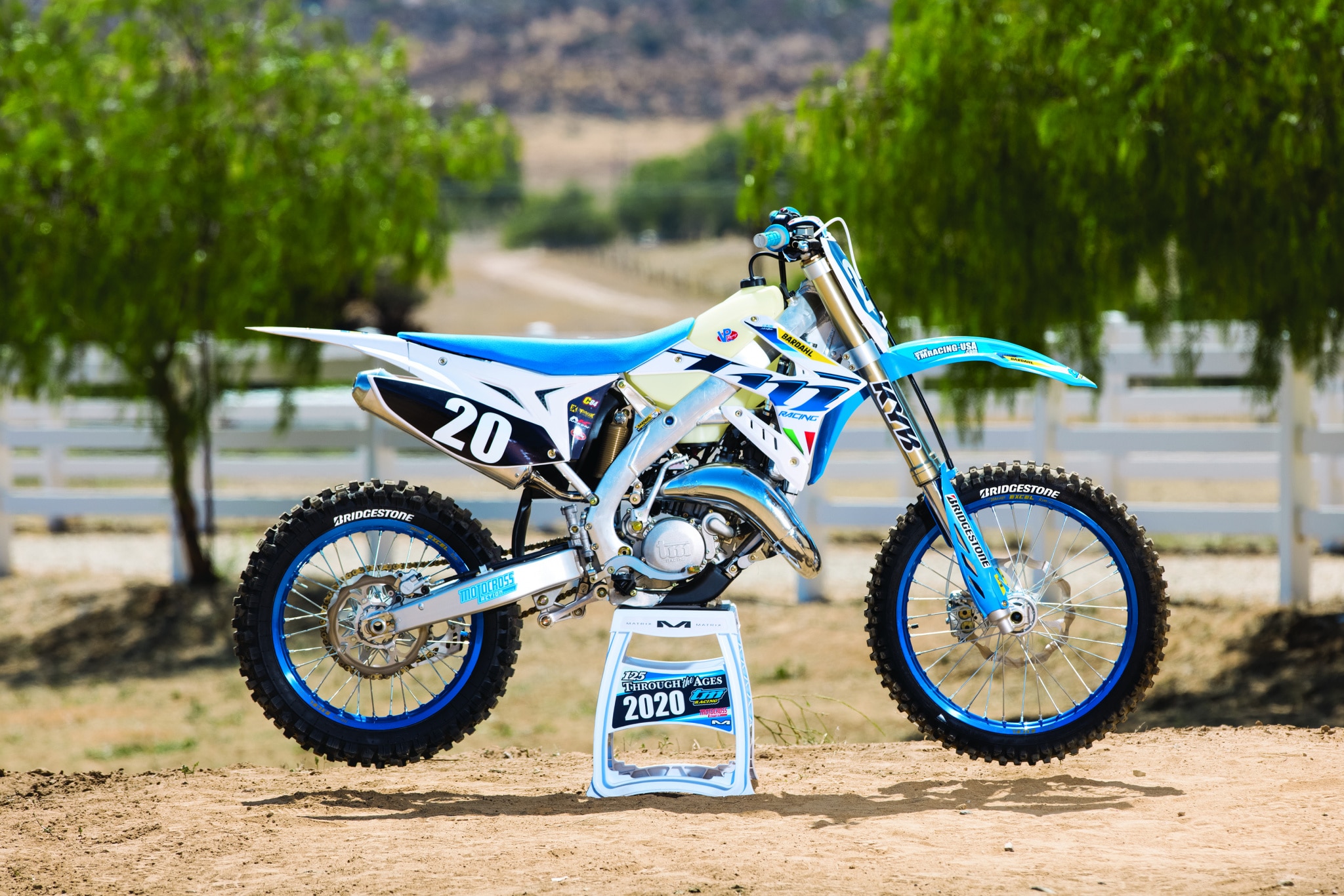 Fuel-injected 2021 TM 125.
Fuel-injected 2021 TM 125.
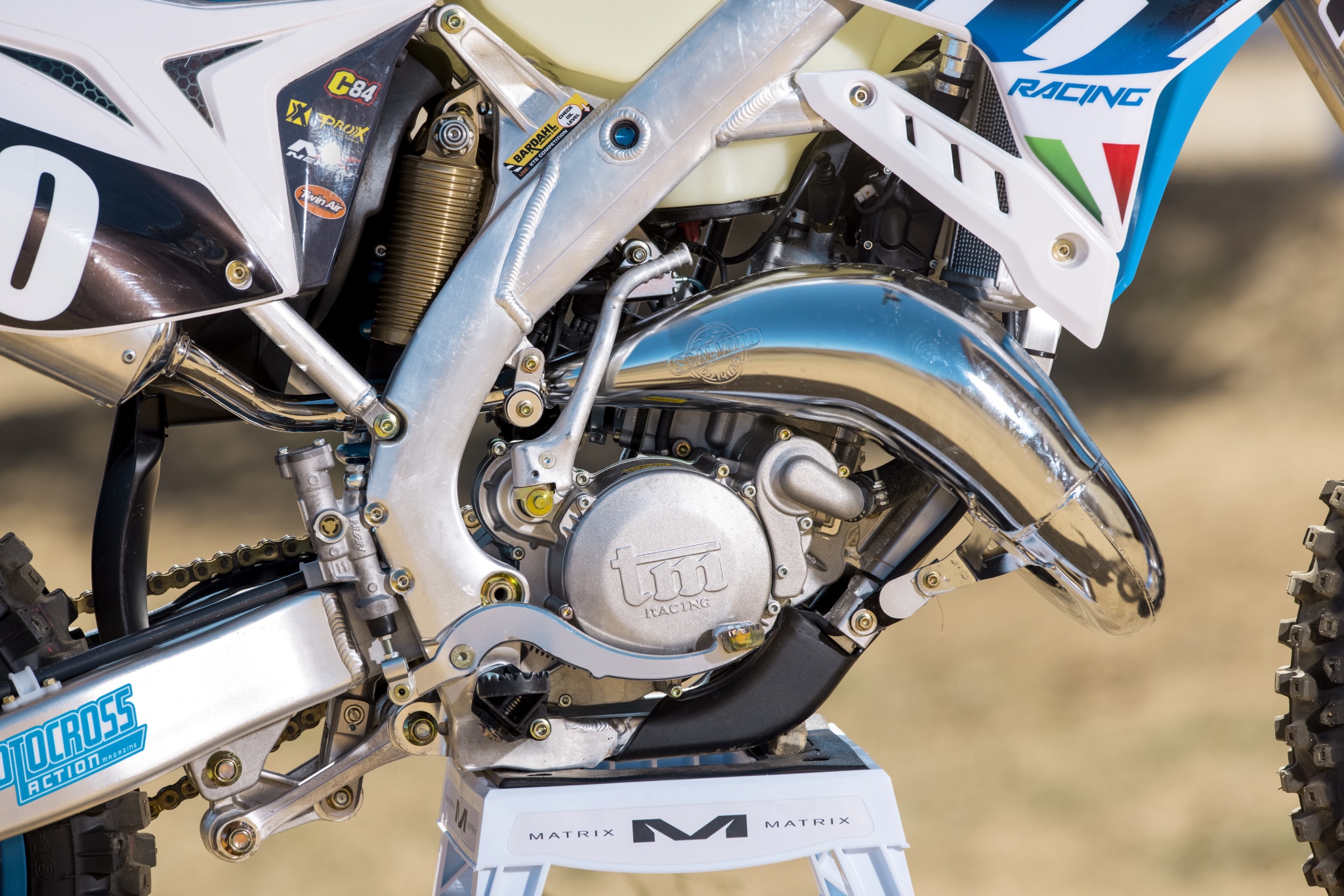
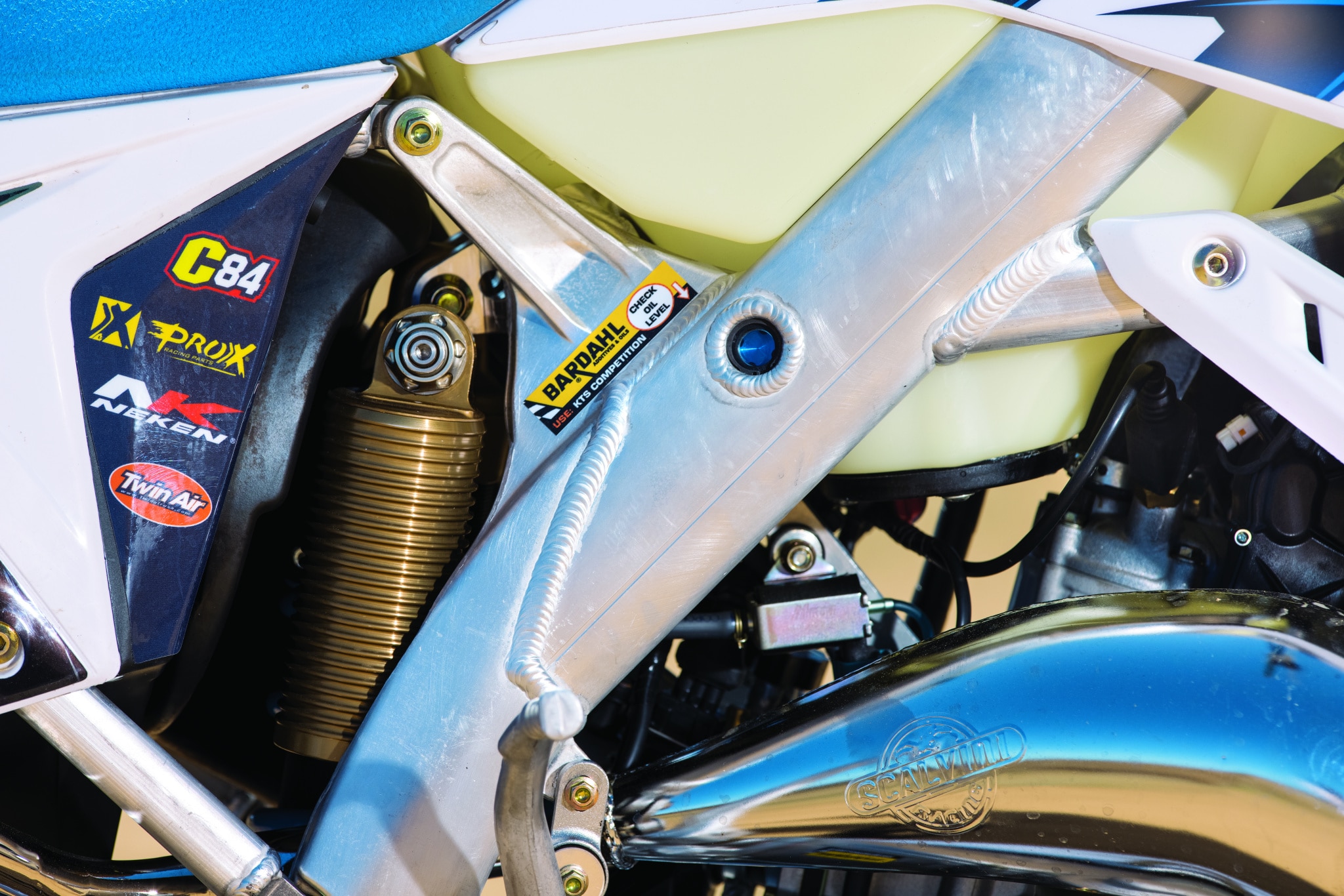
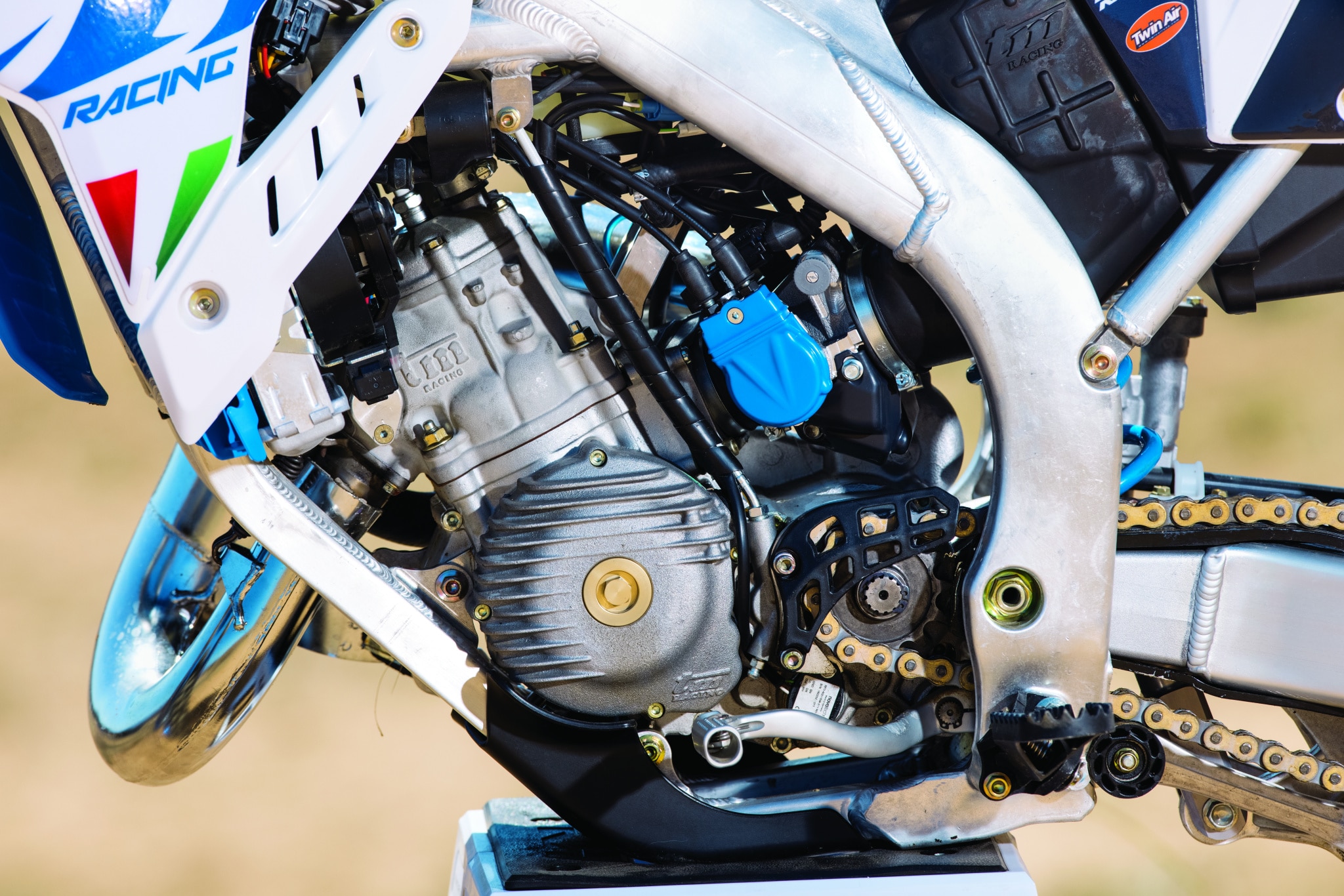



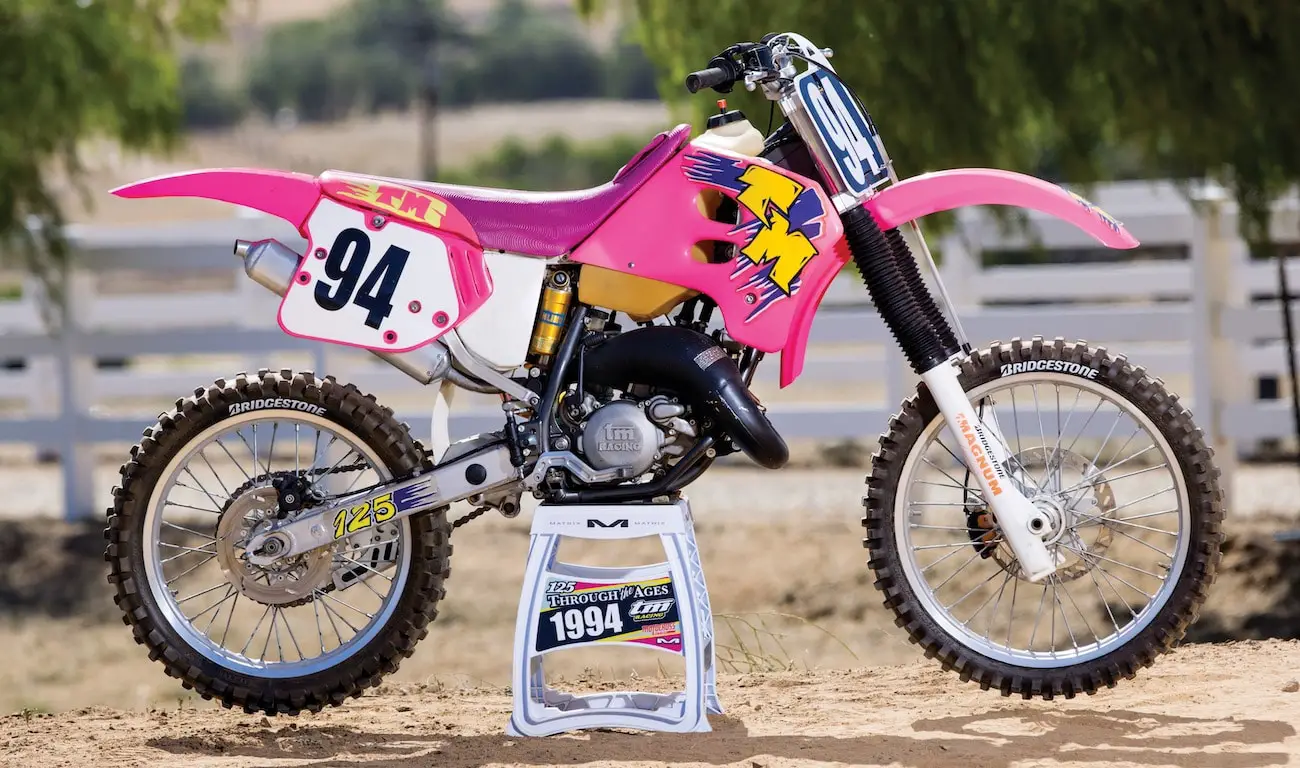
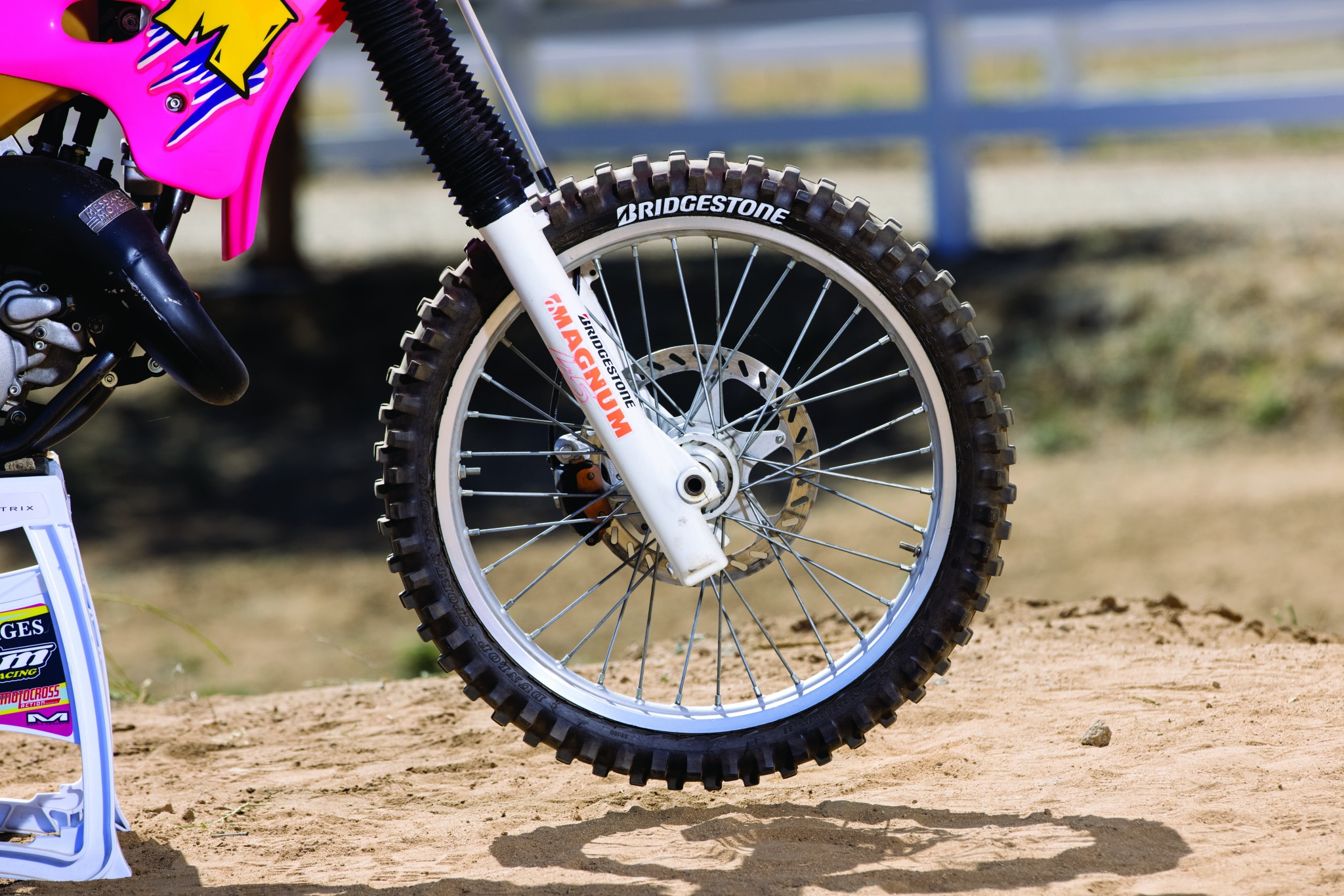
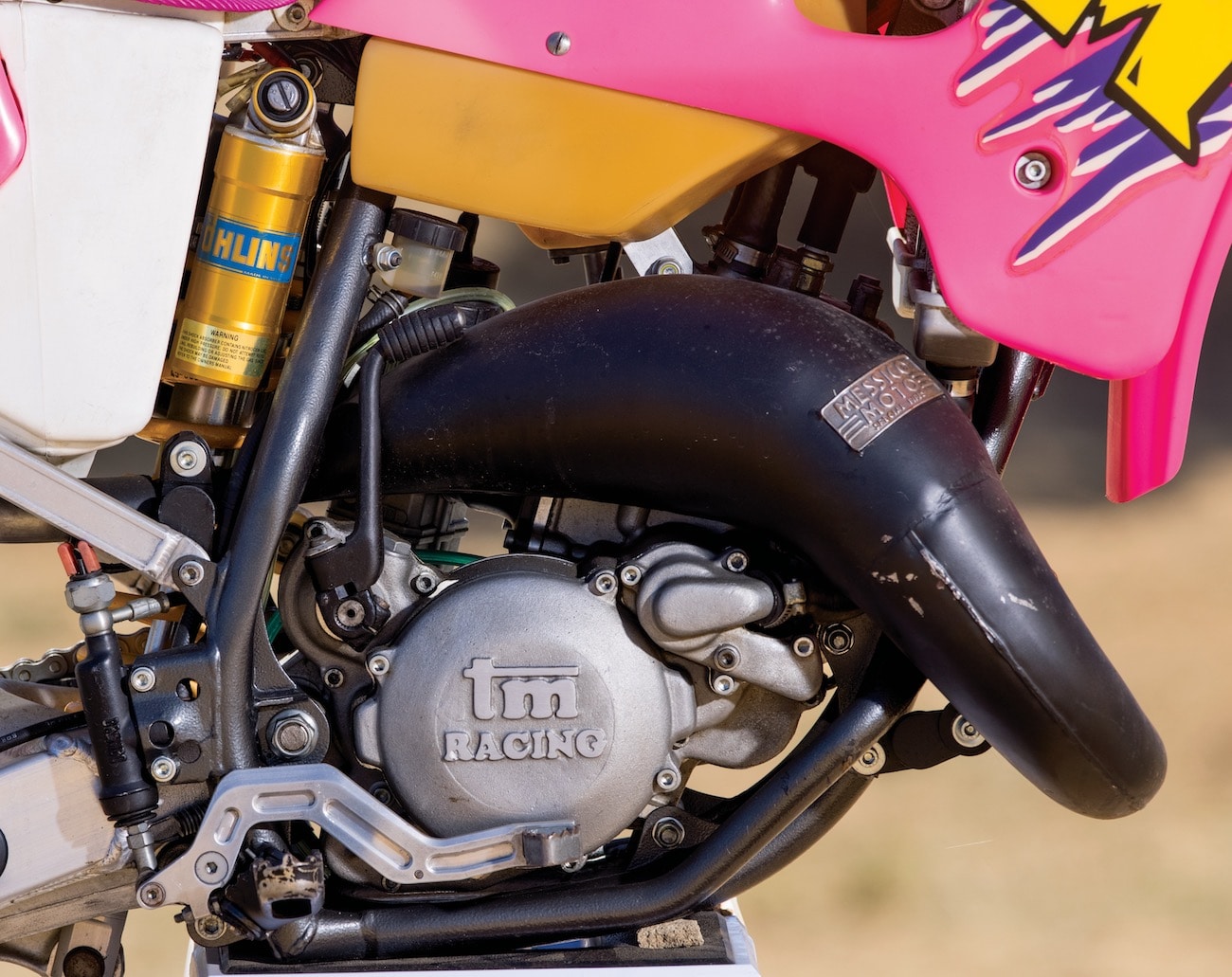




Comments are closed.